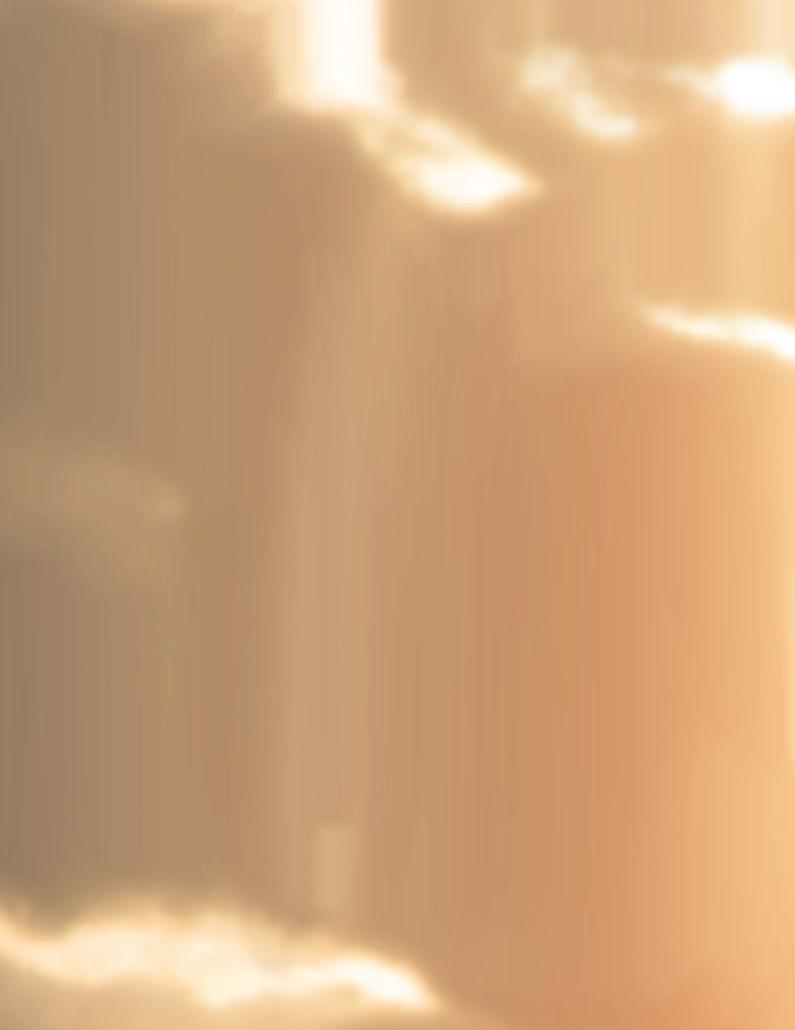Don't Give Up On Your Dreams

Ted Talk Given at Cork University
Dr Patrick Treacy
A TED Talk is a form of presentation that showcases short, powerful talks on various topics and ideas. TED stands for "Technology, Entertainment, Design," and it is a nonpro�t organization dedicated to spreading ideas and knowledge through inspiring and informative talks. In a TED Talk, speakers are invited to share their expertise, experiences, and insights on a wide range of subjects, including science, technology, art, culture, education, and more. These talks are typically delivered in a clear and engaging manner, with a focus on delivering a compelling narrative and presenting thought-provoking ideas. TED Talks are known for their brevity, usually lasting between 5 to 18 minutes. The format encourages speakers to distill their ideas and messages into concise, impactful presentations that captivate the audience. The goal is to deliver content that is both intellectually stimulating and emotionally resonant. My talk tonight is, 'NeverGiveUpOnYourDreamsorYourDreamsWillGiveUpOn You'.
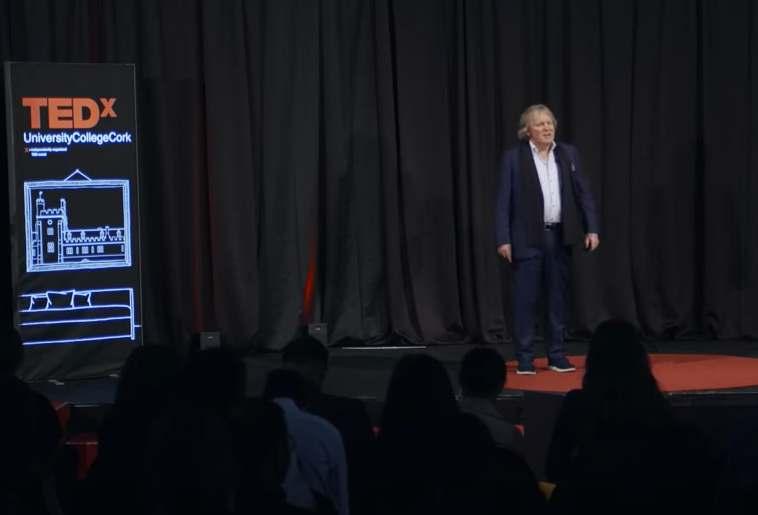
WhatisaTedTalk?
Unfortunately, very few people achieve their dreams and most of the people don't achieve their dreams, mainly because when the going gets tough, they often tend to become demotivated. I'm gonna run you through part of my life, obviously some of it I'll be missing because Ted talks are focused in a di�erent direction, composing an essential part of TED's mission to spread ideas and knowledge. They speak more to the head than to the heart. TED Talks aim to inspire and motivate people by presenting innovative and thought-provoking ideas. These talks often challenge conventional thinking and encourage viewers to think di�erently.
So starting at the beginning of my life, I had some heroes who were mostly writers rather than my brothers who followed English football stars. I felt that writers have a unique ability to transport readers to distant and captivating places through their skillful prose. They can paint vivid pictures and evoke powerful emotions, making readers feel as though they are experiencing the locations themselves.
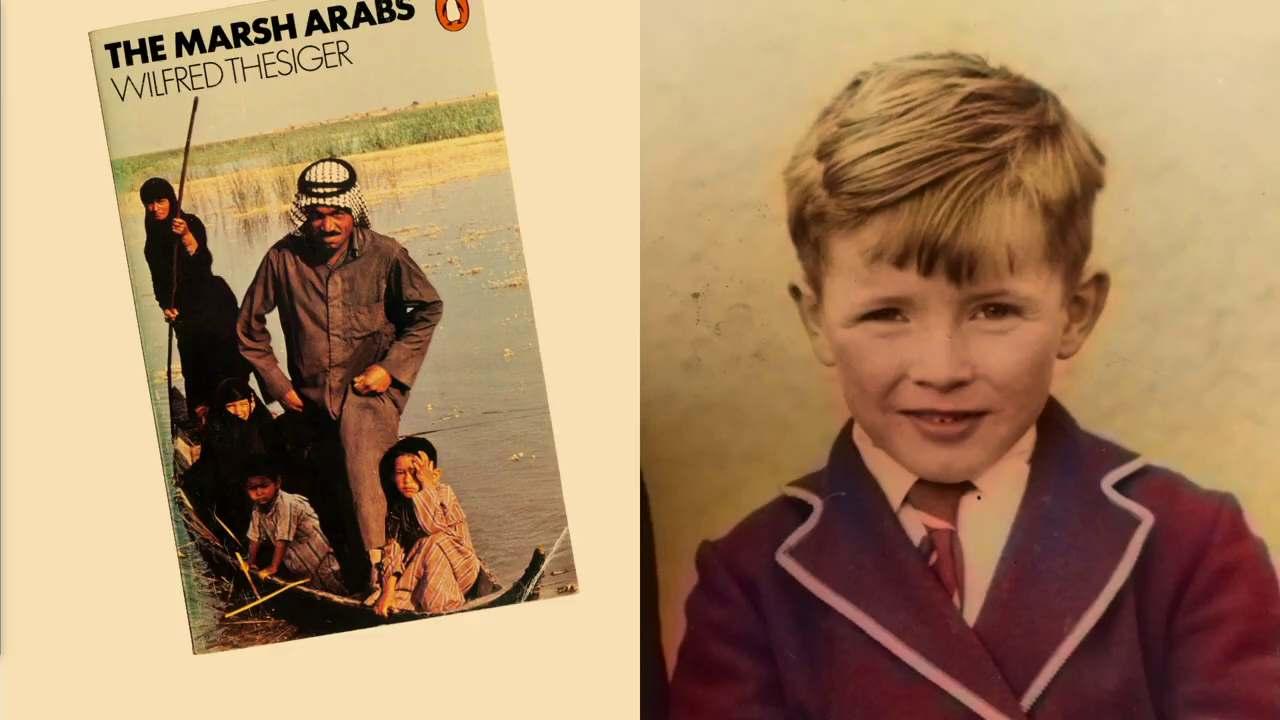
LESSONONE:HaveSomeChildhoodHeroes!
One of those was Ernest Hemingway, the in�uential American writer, short-story writer, and journalist, now widely regarded as one of the most signi�cant writers of the 20th century. Hemingway is known for his distinctive writing style, characterised by concise and straightforward prose, whose works often explore themes of war, love, masculinity, and the human condition. His �rst major novel, "The Sun Also Rises," published in 1926, established him as a prominent writer of the "Lost Generation" – a term he coined to describe the disillusioned post-World War I generation.
Some of Hemingway's most famous novels include "The Sun Also Rises," "A Farewell to Arms," "For Whom the Bell Tolls," and "The Old Man and the Sea," which earned him the Pulitzer Prize for Fiction in 1953 and the Nobel Prize for Literature in 1954. His writing often delves into themes of stoicism, heroism, and the struggle to �nd meaning in a complex and chaotic world.

Lesson3:TrytoReliveyourHeroesAdventures
Over the years I have unwittingly followed his path to many places, from Rhonda in Spain to Key West in Florida, where I was once a ship surgeon.
I also followed his path down in Kenya where he wrote his book 'The Snows of Kilimanjaro'. The story revolves around Harry, a writer, and his wife, Helen, who �nd themselves stranded on an African safari due to a burned-out bearing on their truck. As they wait for help, Harry begins to talk about the gangrene that has infected his leg, leading to life-threatening consequences. The story is a re�ection on Harry's life and regrets as he faces the possibility of death. Throughout the narrative, Harry contemplates his past, including missed opportunities, failed ambitions, and unful�lled dreams. The snow-capped peak of Mount Kilimanjaro in the distance serves as a symbol of purity and a �nal destination for those who seek greatness. This book explores themes of regret, mortality, and the pursuit of artistic expression. In many ways, it brought me to Africa, and to the foothills of Kilimanjaro where I also wrote a story expressing regret regarding a previous relationship.
Throughout his life, Hemingway traveled extensively, seeking inspiration for his stories and immersing himself in di�erent cultures. He drew from his experiences to create rich and vivid narratives that resonated with readers worldwide. He also had a signi�cant connection to Cuba, where he lived for almost twenty years. He resided in San Francisco de Paula, a suburb outside Havana, and his home was known as Finca Vigia, meaning "lookout farm" in Spanish. Hemingway's time in Cuba played a vital role in his life and work, and the country holds a special place in his legacy. The author's Cuban home, Finca Vigia, was a �fteen-acre estate where Hemingway found solace and inspiration. He enjoyed the beautiful surroundings and the ability to sail his �shing boat from the property. Many of his works were in�uenced by his experiences in Cuba, and the local culture and landscape often found their way into his stories.
ErnestHemmingway
RelivingErnestHemmingwayinAfrica

ErnestHemmingwayandCuba
In 2016, I was asked to write the editorial for the Christmas edition of PRIME Magazine International. I re�ect on what to write at the bar of the Floridita restaurant in Havana, where Hemingway once sipped daiquiris with socialites like Jean-Paul Sartre, Ava Gardner, and Errol Flynn. The Afro-Cuban band who are playing behind me e�ortlessly exuded a rhythm of sexuality and rebelliousness, although their passion is probably tempered in respect of the recent death of their revolutionary leader, Fidel Castro. I wrote.......It’seasytoseewhysomeonelike Hemmingwaywasdrawntothisenergeticplace.Hemingwayoncesaid‘writing,atits best,isalonelylife.Awritergrowsinpublicstatureasheshedshislonelinessbutthe mostoftenhisworkdeteriorates’

RelivingErnestHemmingway'slifeinCuba
I continue '
Acrossthebar,intheverybackcorner,isalife-sizedbronzestatueof Hemingwayonhisfavouritebarstool,createdbyCubanartistJoseVillaSoberon.As afellowauthor,wehaveaverydi�erentwritingstyle,hissimplisticwhilemy adjectivesandadverbstendtorunandtripovereachother'.
I look again around me, thankful to be alive to enjoy these days under a Caribbean sun. Maybe I should have chosen another line from Santiago in The Old Man and the Sea,
Hemingway's presence in Cuba has left a lasting impact, and he is considered one of the most well-known �gures in Cuban history, alongside other prominent individuals like Fidel Castro, Che Guevara, and José Martí. His connection to the country is celebrated, and his time in Cuba remains a signi�cant part of his biography. The island's people, places, climate, and culture had a profound in�uence on him and found their way into his stories and characters. Hemingway's relationship with Cuba endured for over 30 years, but he eventually left the country in July 1960 and moved to Key West, where I visited as a ship's surgeon. He eventually settled in New York. I visited the author's Cuban home, Finca Vigia, a �fteen-acre estate where he found solace and inspiration. He enjoyed the beautiful surroundings and the ability to sail his �shing boat from the property. Many of his works were in�uenced by his experiences in Cuba, and the local culture and landscape often found their way into his stories. As a writer, Hemingway's books o�ered me a captivating escape from the familiar and mundane. Both Wilfred Thesiger and himself had a unique ability to transport me to far-o� lands and immerse them in the vivid and exotic landscapes they encountered. As a fellow writer, I appreciated their skill in painting such adventurous settings, which ignited my own creativity and inspired me to explore new territories in my own work.
‘Everydayabove
earthisagoodday’.
Havana,Cuba


As previously mentioned, another of my literary heroes was the British explorer and writer, Wilfred Thesiger, renowned for his adventurous journeys and exploration of remote and challenging regions. His exploration career began in the 1930s, and he gained fame for his travels in the deserts and wild landscapes of Africa and the Middle East. He is particularly known for his expeditions in the Arabian Peninsula, including journeys through the Empty Quarter (Rub' al Khali), the world's largest continuous sand desert. One of his most signi�cant achievements was crossing the Empty Quarter twice, once from west to east and then from north to south. Thesiger lived among various nomadic tribes during his expeditions, immersing himself in their cultures and traditions. His experiences and interactions with these remote communities profoundly in�uenced his outlook on life and his writings. He documented his journeys and experiences in several acclaimed books, including "Arabian Sands" and "The Marsh Arabs." In these works, he vividly portrayed the harsh beauty and cultural richness of the regions he explored. Like him, I wanted to visit these areas and similarly document my experiences

WilfredThesiger
Wilfred was also a humanitarian who was once a warden in the the Ngorongoro Crater, an extinct volcanic caldera located in the Eastern Rift Valley in northern Tanzania. I visited the crater while traveling through Africa in 1992.
For me, the most exciting of all, he wrote a book called the "The Marsh Arabs". And when I was about twelve, I read this book and it really inspired me. He wrote about these primitive people living in present day Southern Iraq who hunted �sh with �ve prong spears. In this book, he documented his experiences with this unusual group of people who lived in the marshlands, and described their unique daily struggles in adapting to their challenging environment. His book o�ered me, even at a young age, a valuable insight into the history, traditions, and lifestyle of these Marsh Arabs, who lived among the water bu�alo, and paddled their canoes through passageway that hadn't changed for possibly almost a thousand years. His account of the Marsh Arabs served as a valuable historical record, and the book later gained particular signi�cance due to Saddam Hussein's drainage of the marshes in the 1990s, resulting in the displacement of the Marsh Arabs and the eventual loss of their traditional livelihoods.

WilfredThesigerandAfrica
WilfredThesigerandIraq
His book 'The Marsh Arabs' o�ered me, even at a young age, a valuable insight into the history, traditions, and lifestyle of these people, who lived among the water bu�alo, and paddled their canoes through passageway that hadn't changed for possibly almost a thousand years. His account of their life served as a valuable historical record, and the book later gained particular signi�cance due to Saddam Hussein's drainage of the marshes in the 1990s, resulting in the displacement of the Marsh Arabs and the eventual loss of their traditional livelihoods.
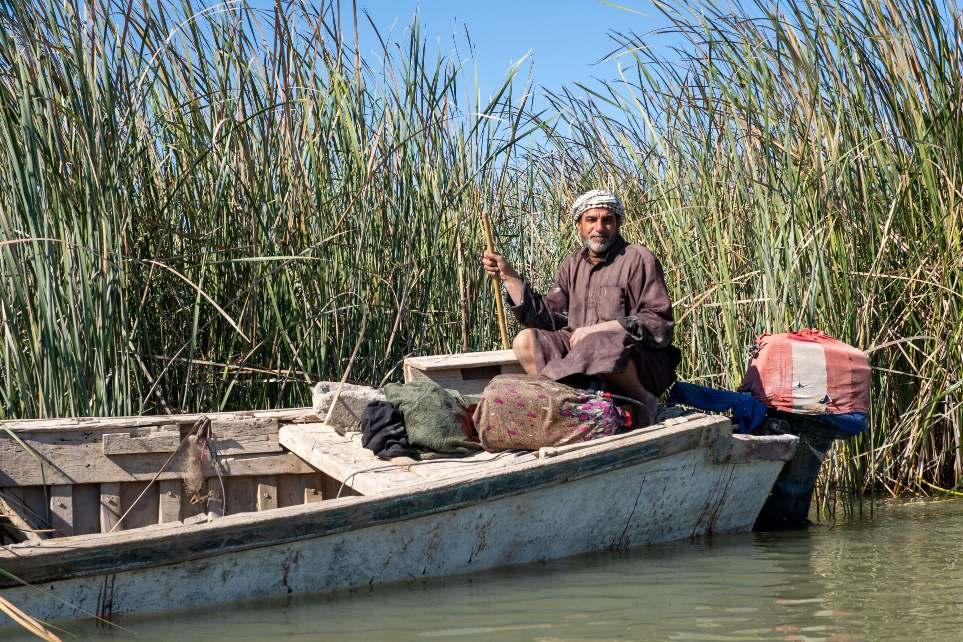
In his books, Thesiger often took on the role of a medical practitioner, providing essential medical aid to the local communities he encountered. In the regions he explored, access to medical care was often limited or nonexistent, his medical knowledge and skills were invaluable to the people he lived among

ObituarytoWilfredThesiger
DreamingofbecomingaFlyingDoctor
He treated various ailments such as boils, dysentery, eczema, ulcers, and other medical conditions, and his ability to o�er medical assistance not only alleviated su�ering but also earned him the respect and trust of the local inhabitants, enhancing his ability to immerse himself in their cultures and customs. Thesiger's life as a doctor-explorer was characterized by his dedication to simplicity and the rugged lifestyle of the people he lived with. His experiences and encounters during these journeys heavily in�uenced his literary works, which provided vivid portrayals of the harsh beauty and cultural richness of the regions he traversed. So I wanted from that point forward, I suppose not only become a doctor, but to go and meet some of these people, whom he had encountered. And rather fascinated by the TV series 'The Flying Doctors' another dream was that I wanted to go to outback Australia and become a Royal Flying Doctor.

TheRoyalFlyingDoctorService
"The Flying Doctors" is a British-Australian television series that aired from 1986 to 1992. It was a popular drama series that captivated audiences with its compelling storylines and characters. The show was a continuation of an earlier British television series called "The Flying Doctor," which aired in 1959 and starred Richard Denning. The 1986 version of "The Flying Doctors" was set in the �ctional outback town of Cooper's Crossing in Australia, and showcased the challenges and triumphs of the RFDS team working there. While the exact location of Cooper's Crossing was never established, it was portrayed as a remote outback town typical of the Australian bush and captured the picturesque landscapes and rugged beauty of the Australian Outback. It featured scenes �lmed in and around Broken Hill, a real-life town located in the far west of New South Wales, Australia. The use of this location added an authentic and immersive quality to the show, and I knew there was a RFDS station there. Naturally, it was also put on my bucket list to relive part of my childhood dreams.
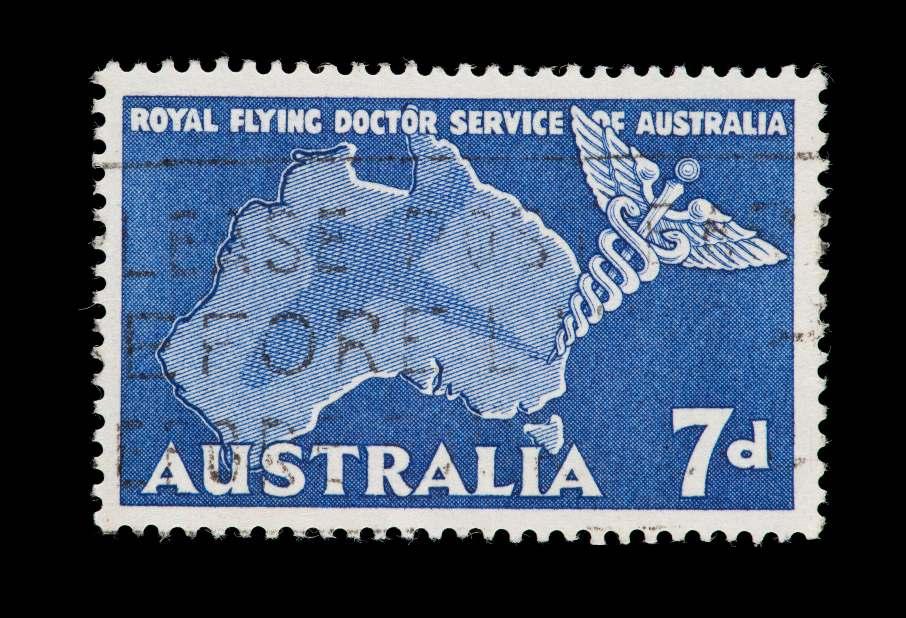
The violence in Northern Ireland during the seventies, known as "The Troubles," was a period of intense con�ict and political unrest. It began in the late 1960s but escalated signi�cantly during the 1970s. As part of pursuing your childhood dreams one must embrace education and skill development relevant to this. In 1974, I attended Queens University Belfast. Acquiring knowledge and expertise in your chosen �eld will increase your chances of success in this. Despite an impending civil war, I passed all my exams, and elected to study for a degree in biochemistry at Queen’s University in Belfast, considered one of the better third-level institutions in the British Isles. This prestigious institution of higher education was located in Belfast, Northern Ireland. It was founded in 1845 as Queen's College Belfast and later gained its status as an independent university in 1908. My choice of �eld was in�uenced by an award I had received in Dublin the year before. I knew that living in Belfast would require me to adapt to new circumstances, but I was optimistic and hopeful for my academic future. I reserved some of my childhood dreams of pursuing a career in medicine but my only childhood exposures to the profession had been an examination for an outbreak of measles by Dr McCollum in his satellite clinic at Gilroy’s pub in Garrison, and the lingering smell of carbolic at the Erne Hospital in Enniskillen when I went there to get some stitches after being bitten by a pregnant laboratory rat.
In October 1977, the Troubles in Northern Ireland worsened, mainly due to the continuing protests against internment. British Prime Minister Edward Heath decided to send an additional 1,500 British army troops to the province. Tensions on campus matched those of the outside world. In 1979, it began to spiral out of control, and Catholic students with political a�liations were being attacked.
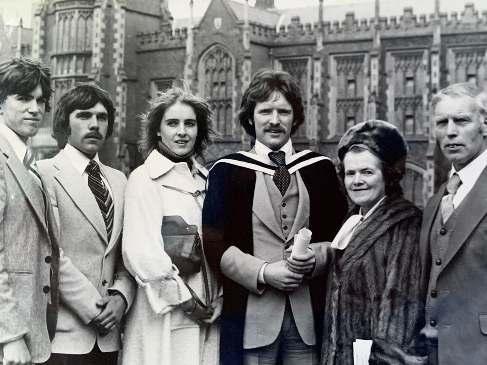
The1970sandNorthernIreland
Being in�uential within the University, I was also targeted and left with a broken leg.
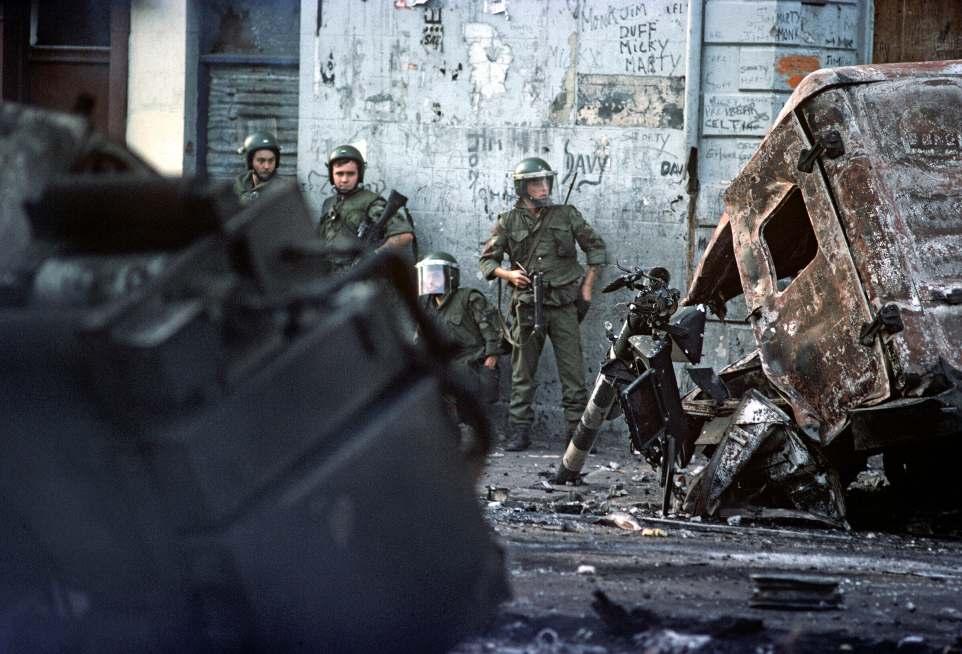
As things grew more dangerous for me, I transferred from Queens University Belfast to do medicine in the Royal College Surgeons in Dublin. Life is a dynamic journey, and there may come a time when you need to be brave, to reassess and possibly even change direction while still pursuing your dreams.
Life events or changes in circumstances, such as the trauma that I experienced, maybe a job loss, a relocation, or a major life event, can prompt the need for a new direction. Embrace change as an opportunity for growth. As life progresses, for many others their values and priorities may evolve. If your current path no longer aligns with what matters most to you, then consider adjusting your course. For me, it was the opportunity to pursue new horizons
Lesson4:ChangingDirectiontomaintainyourDreams
During the 1980s, Dublin, like many other cities, faced signi�cant challenges related to poverty, crime, and drug use. The decade was marked by socioeconomic di�culties, which contributed to the emergence of drug-related issues in certain areas, particularly in the inner city. The city experienced a history of poverty and disadvantage, with certain inner-city neighborhoods being particularly a�ected. The 1980s saw the emergence of a drug epidemic, particularly involving heroin, which was concentrated in small pockets of Dublin's inner city. These areas became known for their drug scenes and markets, leading to social and spatial bias in drug use patterns.
The residents of these disadvantaged areas experienced multiple challenges, including the impact of drug addiction on individuals, families, and communities. Drug addiction not only a�ected physical and mental health but also strained social relationships and overall community well-being.
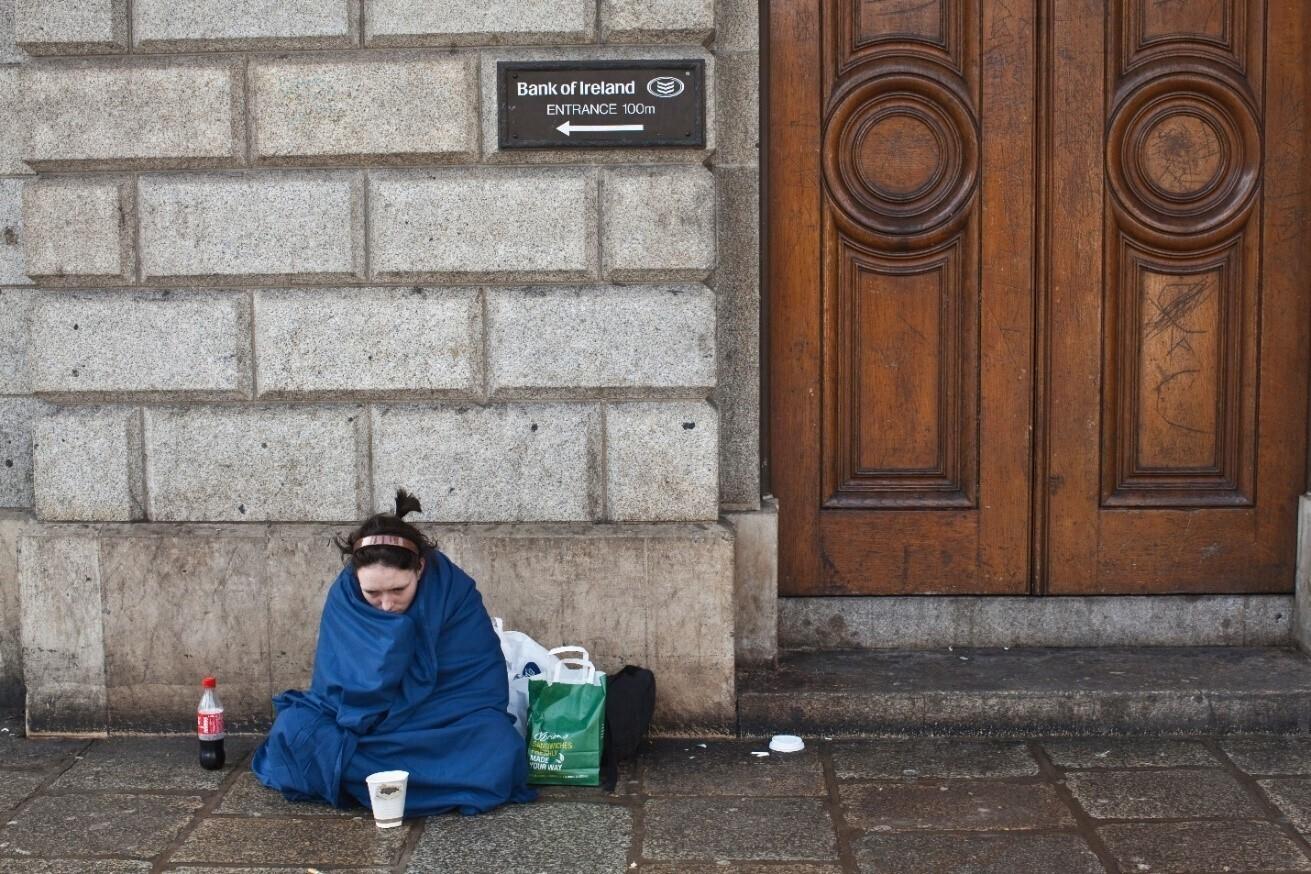
1979-StartinganewlifeinDublin
This wonderful institution was globally recognised for its contributions to medical education, research, and surgical training, and I was very lucky they had allowed me to go there. It had a global alumni base that included many distinguished and awardwinning professionals in various medical �elds, including a prominent Irish physician, Dr. William Stokes who was known for his contributions to clinical medicine and medical education. He made signi�cant advancements in the �eld of respiratory diseases. It also included Dr. Denis Burkitt, an esteemed surgeon and researcher renowned for his discovery of Burkitt's lymphoma, a type of cancer a�ecting the lymphatic system. His groundbreaking work in cancer research has had a lasting impact on the medical community.
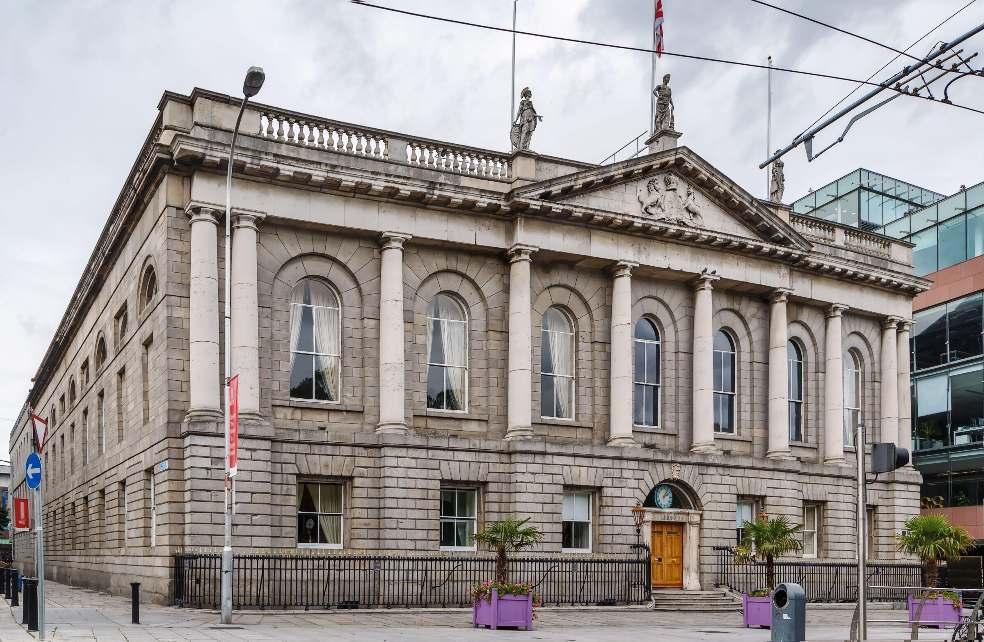
TheRoyalCollegeofSurgeons,Dublin
For the �rst couple of years I did really well and won many awards and medals, including the prestigious Norman Rae Gold Medal. This meant, I even got my name forever embellished in gold lettering on one of the plaques on the walls of the college. Winning awards provides recognition and validation of your skills, talents, and accomplishments. This boost in con�dence can fuel your determination to pursue your dreams with even greater enthusiasm. Awards ceremonies and events often bring together like-minded individuals and industry professionals. Networking with such individuals can open doors to new collaborations and mentorship opportunities. Your achievements and recognition through awards can inspire others, especially those who share similar dreams and aspirations. Being a role model can have a positive impact on the community and encourage others to follow their dreams as well. Overall, winning awards can serve as a catalyst for achieving your pursuits and childhood dreams. They o�er tangible and intangible bene�ts that contribute to personal growth, professional development, and the realization of your aspirations.
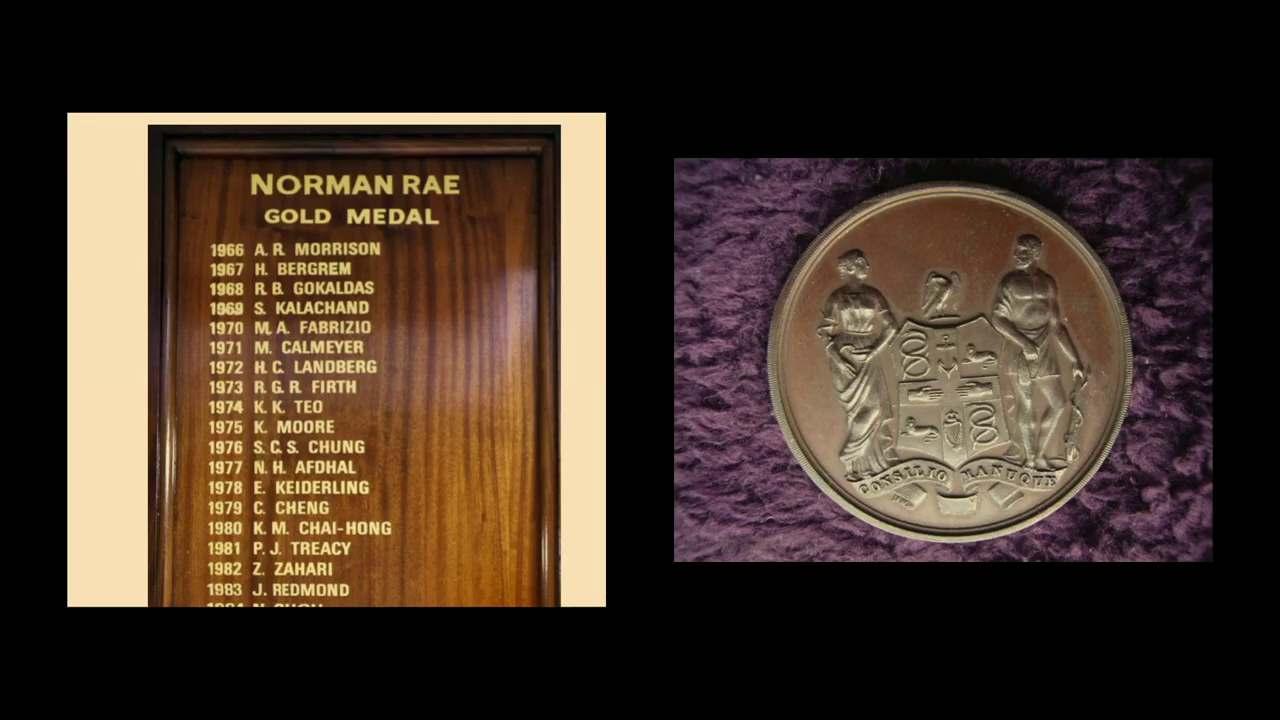
TheBene�tofAwards
In 1979, life was full of interest for me. Everything in medicine was new. This is a picture of me dissecting a rat for anatomy class in a friend's house in Dublin. There was a derelict bit of land beside the college, called the Dandelion Market. The site, originally part of the Taylor-Keith bottling plant in St Stephen’s Green, had become a cultural nirvana, bustling with stalls selling punk badges and Sex Pistols posters. The punk culture was in decline, but still had some diehard Dubliner fans who dressed in bin liners and exuded a sense of nihilism towards politics and economics. The Boomtown Rats and the Vipers were in their ascendency, while bands like Sti� Little Fingers and the Undertones could still be heard at the college parties. Before long, an academic year had passed, and it was time to plan how I would spend my summer vacation. Some students joined the Overseas Electives Scheme (TOES) and went abroad to treat patients in the Third World. This required some experience in performing surgical procedures, especially caesarean sections, and appendectomies.
The rest of us, who were still much too inexperienced for this, thought about ways of earning enough money for the next year at college by working abroad.

1979-AYeartoRemember!
One Saturday in the Dandelion Market, I watched U2 perform – it was the �rst time I had seen them. They played there on weekends, and we became friends. Later, I watched them on Saturday mornings on Dave Fanning’s RTÉ television show and, even further on, I went drinking with the Edge in Strings Nightclub on Leeson Street. My friendship with the band continued long after the old market closed.
In July 2015, I attended U2’s Innocence + Experience tour in New York. Before the concert, I met up with my Facebook friend, Julianne Mosher, whom I’d delivered as a baby at sea o� the coast of Mexico twenty-three years before. It was an enjoyable experience to meet in such circumstances. The concert was exciting, with the stage becoming a giant walkway leading to another small circular step in front of me. A giant screen hung above, with digital scripts running along with it. The show began with the four members of U2 together on the mainstage, backlit in red with a single giant lightbulb hanging near Bono. He got up and walked along the walkway when singing songs about his youth, including Cedarwood Road and Raised by Wolves.
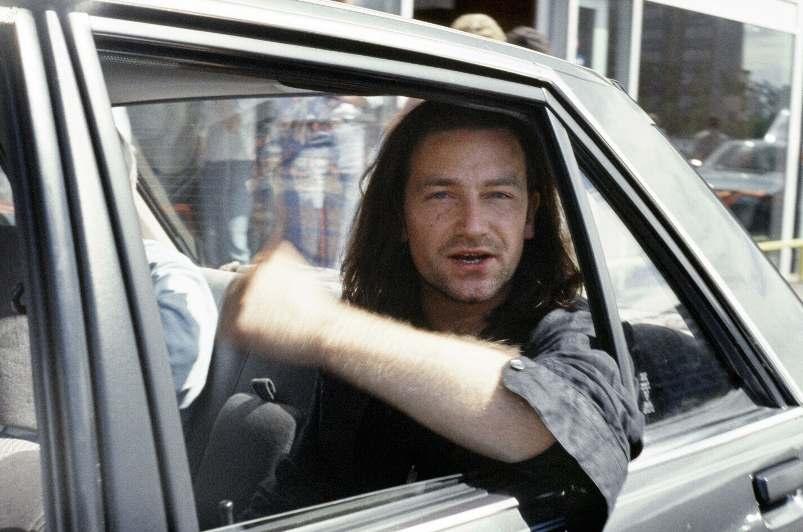
DublinandU2

DublinandU2
SaddamDrainstheMarshes!
But other things away from Ireland were happening. In Iraq, Saddam Hussein started to drain the marshes that Thesiger had previously written about. This act had severe consequences for the ecosystem and the Marsh Arabs who relied on them for their livelihood. Saddam Hussein drained the marshes primarily for political and military reasons. The marshes served as a base for Shi'a Muslim insurgents who opposed Saddam's Sunni-led Ba'athist regime. By draining the marshes, Saddam aimed to undermine the insurgents' capabilities and eliminate their hiding places. This led to the loss of wildlife habitats, including numerous species of birds, �sh, and plants that were unique to the marshes. Having your childhood dreams taken away from you can be a challenging and emotionally di�cult experience. Many would consider setting new goals and aspirations but I remained determined to visit the area for myself. Instead of dwelling on lost dreams, create new ones that align with your current interests and passions. Embrace the possibilities of new paths and opportunities!
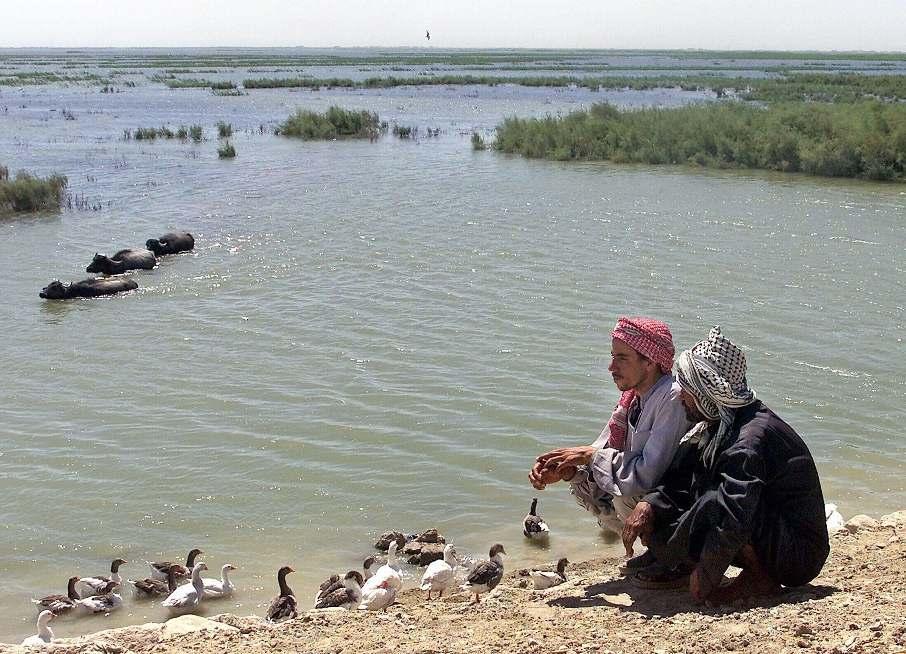
In 1979, Margaret Thatcher made history by becoming the �rst female Prime Minister of Britain. On May 4, 1979, she was sworn in as the leader of the Conservative Party and assumed the role of Prime Minister, marking a signi�cant milestone in British political history. Thatcher's premiership was marked by her conservative policies and �rm leadership style, earning her the nickname "The Iron Lady." She was fascinated by the right-wing ideology of an in�uential American economist, Milton Friedman, who believed in deregulation, tax cuts, and the sale of state-owned industries and reducing the role of trade unions.
Thatcher's policies aimed at reducing the power of trade unions and promoting a freemarket economy led to the closure of many traditional industries. Deindustrialization hit working-class towns particularly hard, as factories and manufacturing plants closed down, resulting in widespread job losses and economic decline. The closure of industries and the reduction of government subsidies led to a rise in unemployment rates in many working-class areas. The lack of job opportunities and �nancial support contributed to increased poverty levels among the working class.

1979-ThatcherbecomestheUKPrimeMinister
Thatchertakesawaymygrant!
Her economic policies were meant to promote entrepreneurship, individualism, and economic growth. Margaret Thatcher's tenure as the Prime Minister of the United Kingdom from 1979 to 1990 also saw signi�cant changes in higher education funding. Thatcher's government introduced reforms that shifted the funding model for universities and a�ected the availability of grants. Under Thatcher's government, there was a move towards reducing state funding for higher education and increasing the role of student contributions through tuition fees. Her reforms unfortunately also included removing my educational grant to study medicine in Dublin. Here I was, in the middle of one of the most expensive colleges in the world, which fees running for the next three years or something like £25,000.
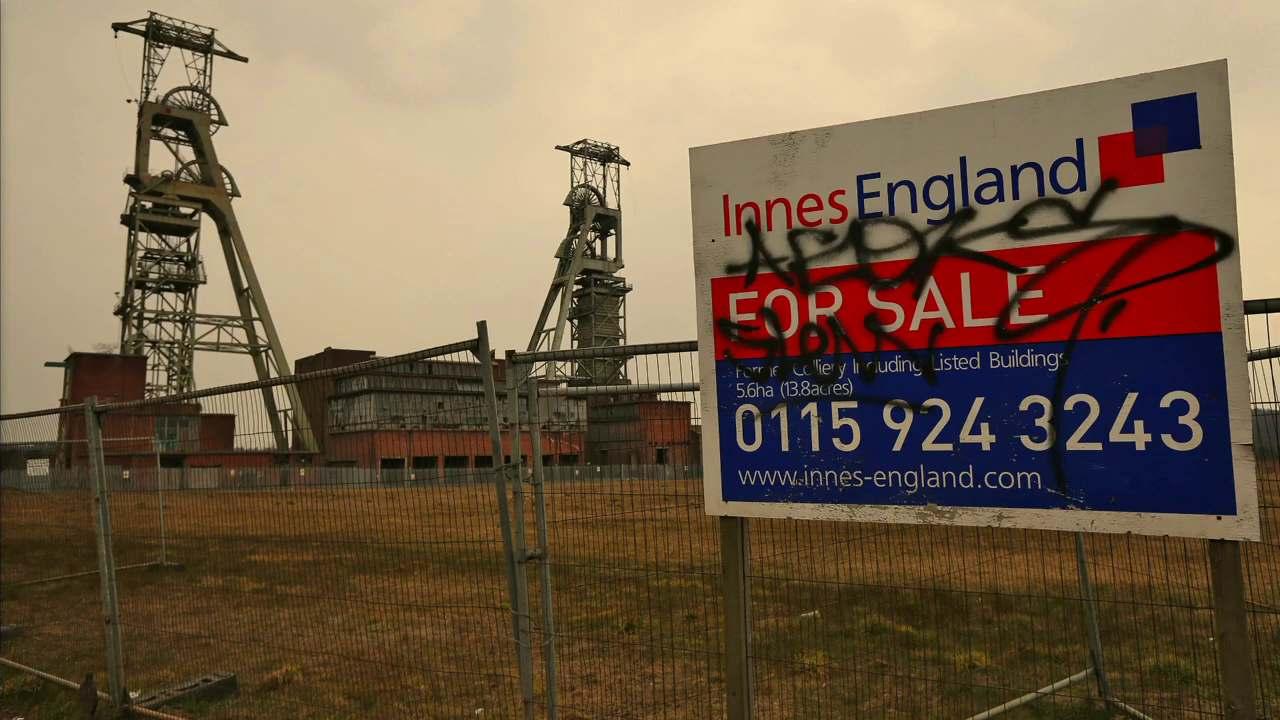
Sothatwasanobstruction!
So when you come across obstructions one must learn to transform them into opportunities by adopting a positive mindset and strategic approaches. Viewing obstacles as challenges that can lead to growth and improvement is essential. They often present valuable learning experiences, and we must learn to embrace them as opportunities for personal and professional growth.
Rather than perceiving obstacles as roadblocks, see them as detours on the path to your ultimate goal. Maintain a belief that your objectives are achievable, and obstacles are temporary setbacks. I sort of had no choice really, but had to leave college and try and earn some money. Certainly I didn't come from a privileged background. So the �rst lesson is don't resist the temptation to scale down your dreams.
When facing obstacles, collaborate with others. Engage in open communication, leverage teamwork, and pool resources to �nd collective solutions. Collaboration can bring fresh perspectives and new ideas to overcome challenges. A couple of my college friends were going to spend the summer in Munich, so I decided to go with them. Some were working in factories while others posed as tradesmen, making out they were builders or painters. Munich was situated on the banks of the River Isar, and its location on the fringes of the Bavarian Alps o�ered stunning natural surroundings. It was the second-largest city in the Bavarian dialect area, after Vienna and boasted many historic landmarks, including the Nymphenburg Palace, the Munich Residenz, and the Frauenkirche.

Lesson5:Don'tperceiveobstaclesasroadblocks!
Munich-CityofOpportunity?
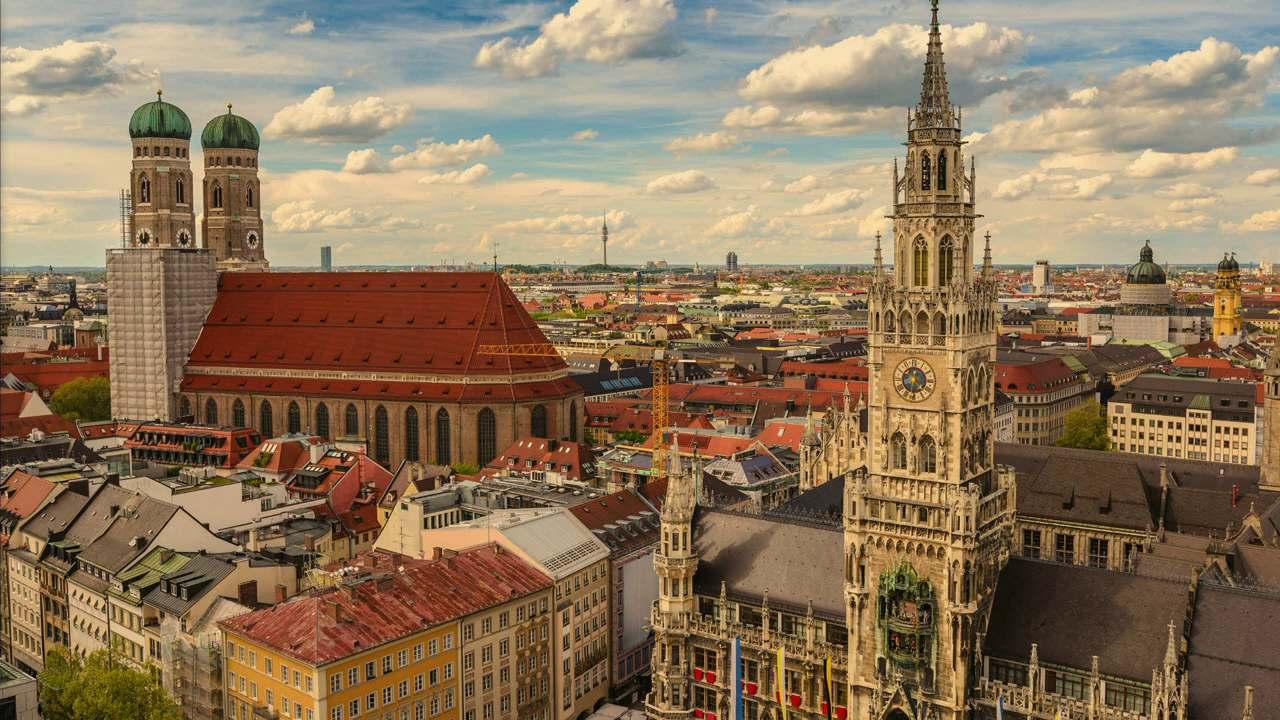
The city was known to us mostly for its annual Oktoberfest celebration, one of the world's largest beer festivals, drawing millions of visitors from around the globe. For me, it was home to several prestigious universities, and museums, contributing to its vibrant arts and academic scene. Despite its obvious historical charm, and a high quality of life, I quickly realised, there was absolutely no way a student posing as a painter in Munich was going to make enough money to fund a further three years at the Royal College of Surgeons in Dublin.
One night, I began chatting to a German student in a bar near Schwabing, a popular area for young professionals and students. He told me about a scam where his friends could take a car down to Turkey and get four times the price of it. And that was old battered cars in the time of Deutsch marks. With new ones the rewards were much more. And I began thinking, ''Hmm, if I sort of could get in on this scheme, maybe I'd earn enough cash to fund my college fees. So without thinking for too long, I realised that I had to get into the organisation, and learn how it ran.
Don't wait for opportunity but rather create it. This statement emphasizes the importance of taking initiative and actively seeking or generating opportunities instead of passively waiting for them to come your way. Waiting for the perfect chance to come may lead to missed opportunities and a lack of progress. By being proactive and creating your opportunities, you can take charge of your life and shape your future according to your goals and aspirations. However, this plan involved smuggling!

While it is important to note that smuggling itself is illegal and may involve various forms of exploitation, I grew up on the border of Northern Ireland where smuggling was part of everybody's nature. In my own father's garage, people used to bring up butter from the south of Ireland, get on tires in our garage, and we'd get out a grinder when we were still only children and take o� 'Made in the UK' from it. So smuggling was I suppose already embedded in my nature.
Lesson5:Don'twaitforopportunity-Createit!
And as a consequence I said, okay, this seems like a good idea for me. However, I was aware that smugglers also can take advantage of vulnerable individuals who are seeking a better life or escaping di�cult circumstances. They exploit the desperation of these individuals and pro�t from their desire to reach a destination where they hope to �nd better opportunities. Ihadtobecareful!
Someone once said that "Ambition is the path to success, and persistence is the vehicle you arrive in". This statement emphasises the importance of both ambition and persistence in achieving success. Ambition serves as the driving force that propels individuals toward their desired goals and aspirations. It is the inner desire, determination, and vision to achieve something meaningful. Ambition provides the motivation and direction necessary to set ambitious goals and work diligently towards them. So, I decided if "Ambition was the path to success, then a new Mercedes sports car was the vehicle I would arrive in".
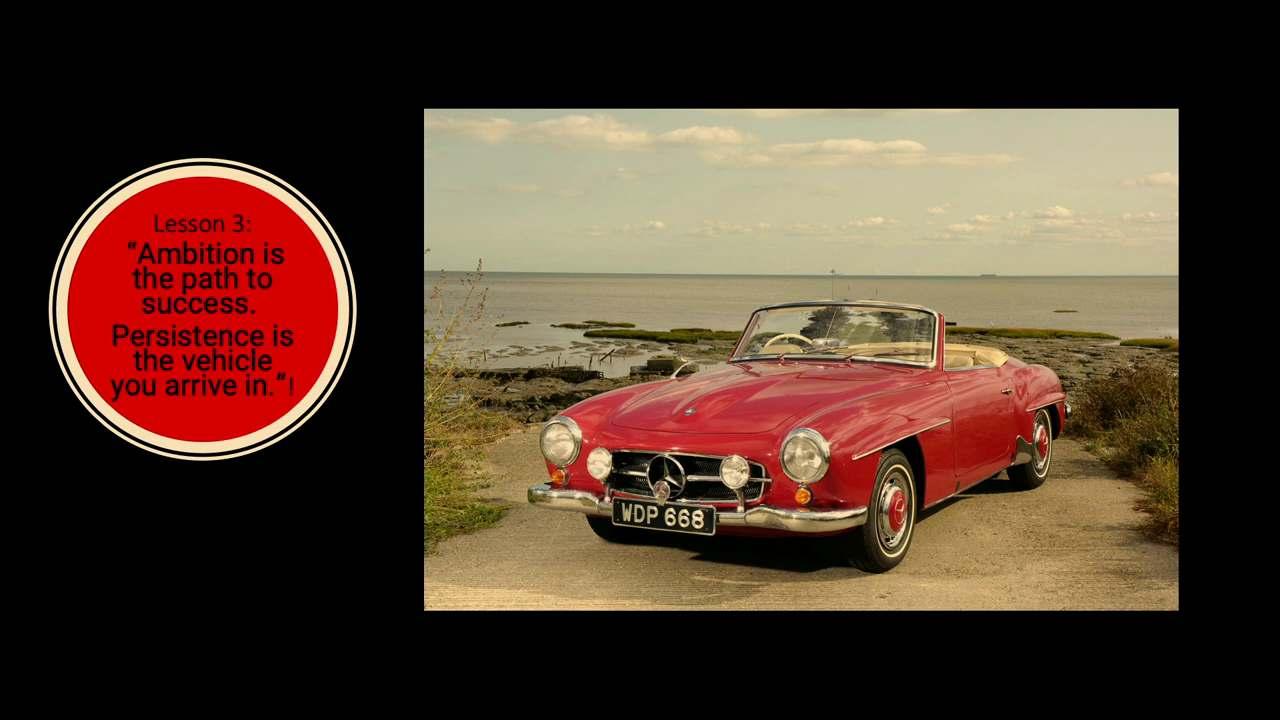
Lesson6:BalancingRiskandOpportunity
LivinginIstanbul
Istanbul, was a city with a rich history and a strategic location between Europe and Asia, and for me boasted a fascinating past that spanned thousands of years. I was eager to travel there despite the risk to savour its historical buildings, which were a testament to the city's cultural and architectural heritage. We reached Istanbul on the afternoon of the fourth day and parked the cars in the Sultanahmet neighbourhood. We were given lodgings in the dilapidated old part of the city, which had been the capital of two of the world’s greatest empires – the Byzantine and the Ottoman. There we visited the infamous Pudding Shop, which had featured in Alan Parker’s �lm Midnight Express, about an American student called Billy Hayes who was sent to prison in Turkey for trying to smuggle hashish out of the country.
I also was a type of amateur journalist and had already written many previous articles from challenging locations around the world. After a few trial runs as a Mercedes driver, I settled in the city's historic peninsula where many of Istanbul's iconic buildings were located. The area was called Sultanahmet and was located in the heart of the city. It contained the Blue Mosque, a stunning masterpiece of Ottoman architecture with impressive domes, intricate tilework, and six minarets. Nearby was the Hagia Sophia, originally built as a cathedral in the 6th century, it later became a mosque and was now a museum. Over the next few months, I got to know the city quite well, learned some Turkish and befriended the leaders of the organisation.
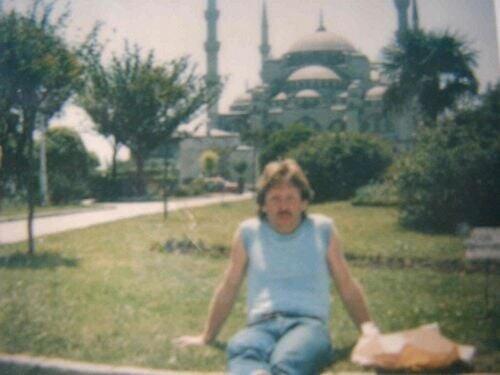
I had to balance, unfortunately risk against opportunity. This was 1981, and everyone was still talking about 'Midnight Express' a 1978 prison drama �lm directed by Alan Parker. The movie was based on the memoir of the same name written by Billy Hayes in 1977. The �lm tells the story of Billy Hayes, a young American who is arrested in Turkey for attempting to smuggle hashish out of the country and sentenced to a lengthy prison term. "Midnight Express" explores the harsh realities of prison life and the challenges faced by Billy Hayes as he tries to survive and ultimately escape.
The �lm received critical acclaim for its intense and gripping portrayal of the prison environment and the psychological toll it takes on the characters. It was also notable for its powerful performances, particularly Brad Davis in the role of Billy Hayes. The movie delves into themes of injustice, survival, and the human spirit's resilience in the face of extreme adversity. It serves as a commentary on the harsh Turkish legal system and the harsh conditions faced by prisoners. Consequently, we all knew about the jails in Istanbul and what they did to people if you were caught.
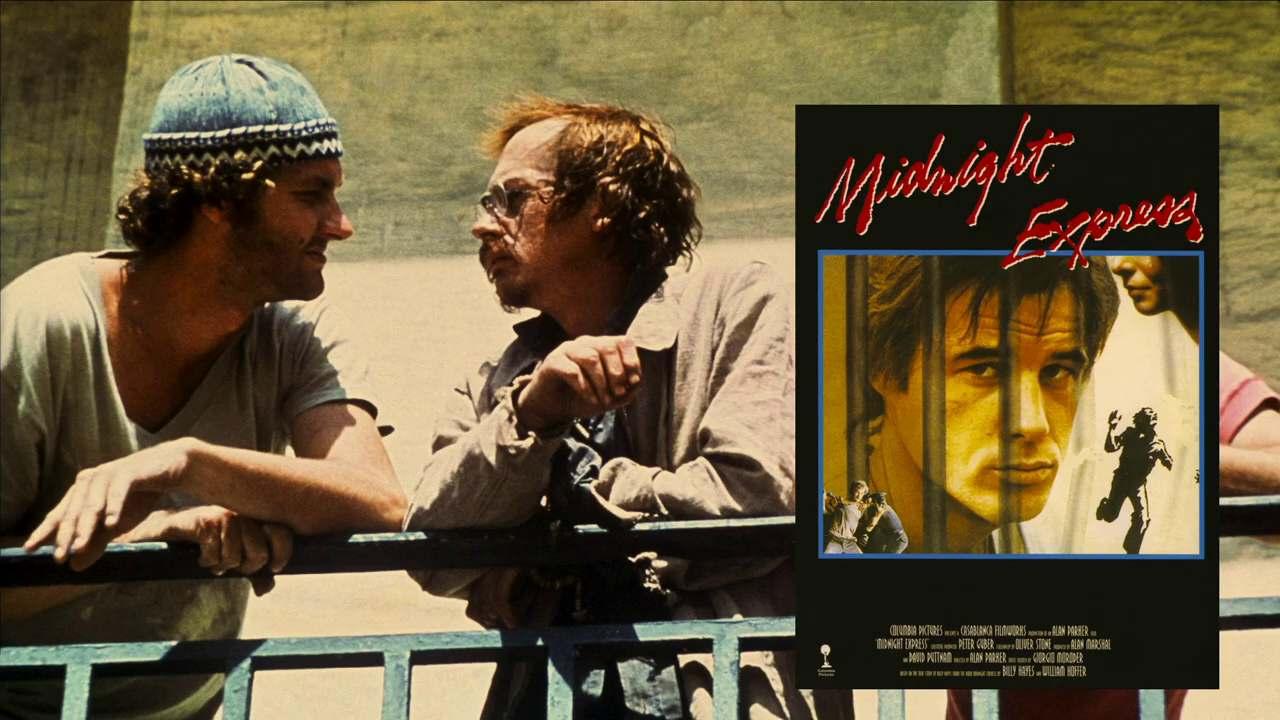
'MidnightExpress'

'LivinginIstanbul'
'LivinginIstanbul'
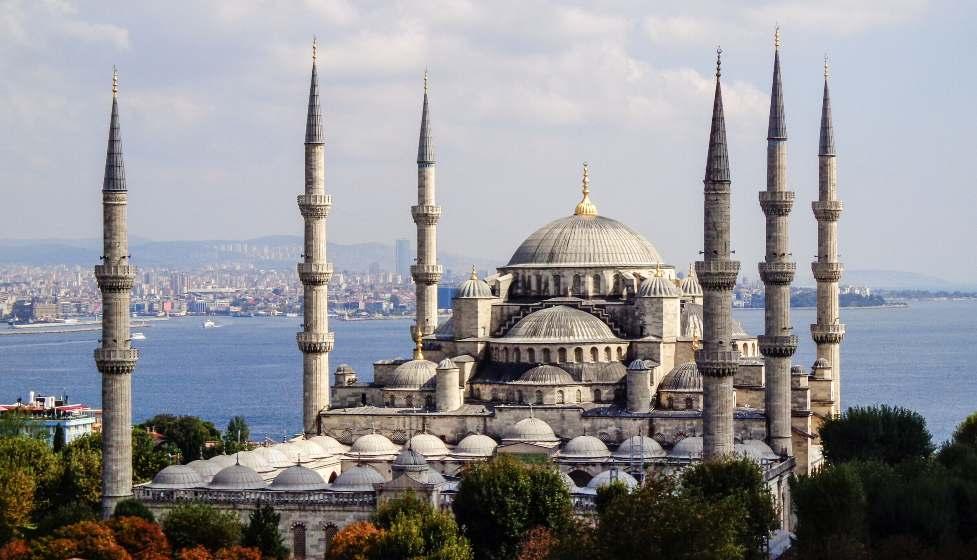
It was my �rst encounter with an Islamic city, and I bathed in its wondrous sounds: the muezzins calling the faithful to prayer, and the rich tapestry of musical styles that celebrated the diversity of contemporary Turkish life. It is said that St Augustine once wrote, ‘The world is a book and those who do not travel read only one page.’ Well, Istanbul was my Bible, my Koran, my Torah, and I wanted to read it right through to the last chapter.
On those balmy sunny afternoons, I’d often sit reading in the elegant gardens of the Blue Mosque and learn some Turkish from the local children. We would begin by counting the six minarets nearby: ‘Bir, iki, üç, dört, beş, alti.’ The building got its nickname from the magni�cent blue haze created by the blue and white Iznik �oralmotif tiles that decorated its interior. Other times, I’d go to the riverbank and wait until the evening sun set and the towers melted into the rivulets of violet colours in the evening sky. Russian cargo ships would pass on their way upriver.
Planning your path allows you to anticipate potential challenges and devise strategies to overcome them. This proactive approach can help you navigate obstacles and stay on course towards your dreams. Within a few months, I had taken a calculated risk and brought seven brand new Mercedes down to Istanbul and Antalya and made enough cash to cover my next three years at college and beyond.
I quali�ed in June 1986 and, as I stood there taking the medical degree scroll from the registrar of the college, I re�ected on the many life experiences that had brought me to that point in my life. I thought about the recent death of my father, and how he would have loved to see me standing there that day. I also thought about my mother, who had put me on the journey that had eventually brought me to this point in my life.
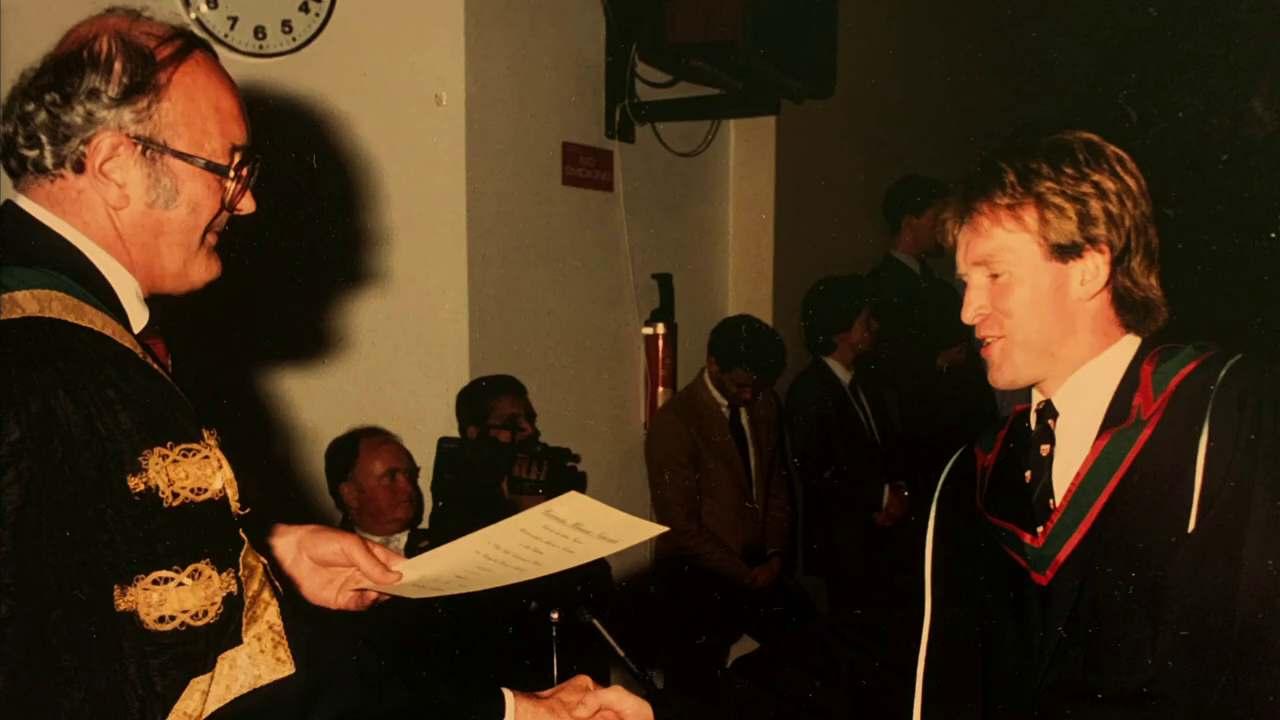
Lesson7:PlanningYourPath
TheHIVepidemic!
In 1986, I completed my medical degree and started o� my life as a junior doctor. Then things changed dramatically once again....I was only six months out as a doctor and this seventeen year old severe asthmatic heroin addict came into our emergency room one night. He went downhill and turned quite blue. And after getting some blood from his tortuous �brous veins, I attempted an arterial stab to check the oxygen levels in his blood. The doctors among us will know that it's more di�cult than pulling venous blood. He had one hidden non �brosed vein left that he used for 'mainlining' his heroin and he thought I was looking for it. In his attempt to save himself, he o�ered it up and turned around on the bed to show me it. This action tossed the bloods o� the bed onto the �oor, and I felt the needle stick deeply into my leg.
He saw what had happened and turned to me and said. 'I'm HIV positive doc!' At that time there was no cure for HIV. Now as well as that, in the hospital that I was in on that very day, they burnt a twenty three thousand pound gastroscope because it had been used in an HIV patient, everybody thought you could get it from kissing.
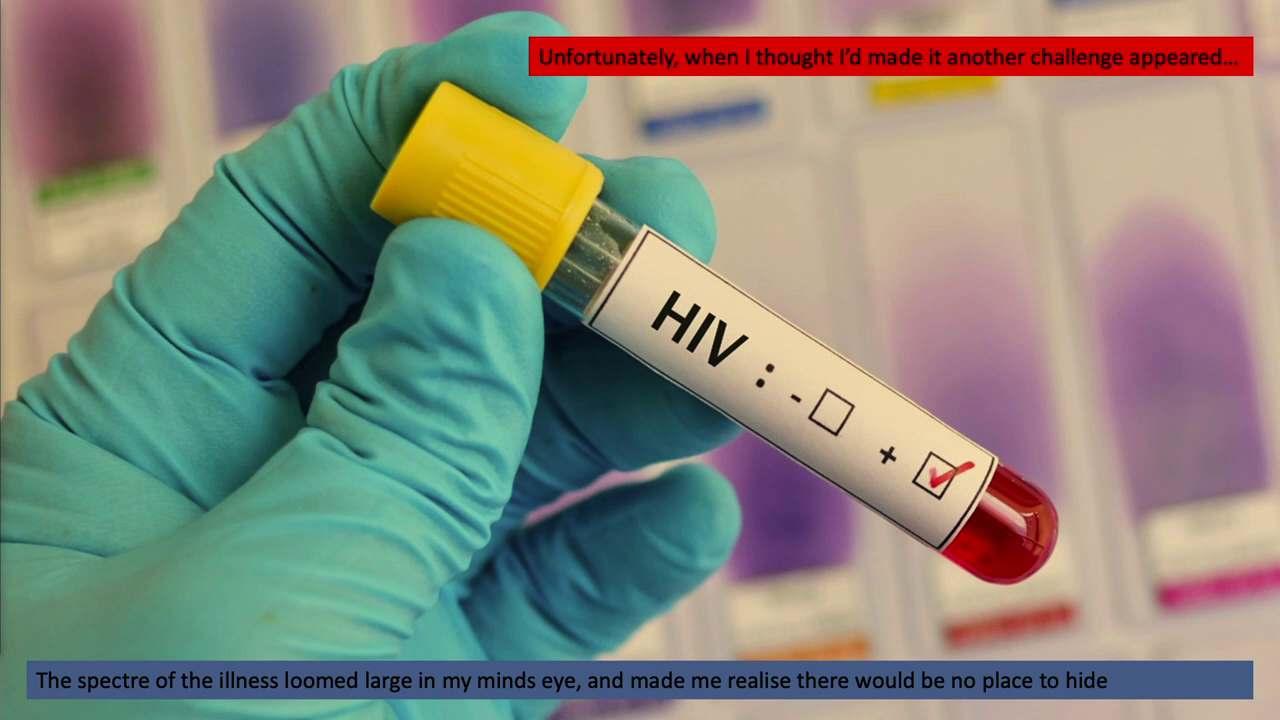
PeoplebegindyingofAIDS!
During 1986, the HIV epidemic started to raise signi�cant public health concerns, and e�orts to combat the spread of the virus and provide care and support to a�ected individuals were still ongoing. The year served as a critical point in the epidemic's timeline, prompting increased awareness and response from governments, organizations, and communities worldwide. Rock Hudson, an iconic Hollywood star, had become the �rst major celebrity to disclose his AIDS diagnosis publicly. He issued a press release revealing his health condition and stated that he was in France for treatment. Tragically, he passed away from an AIDS-related illness on October 2, 1985, at the age of 59. His public announcement about having AIDS was a signi�cant moment in history, as it brought attention to the AIDS epidemic and helped to increase awareness and understanding of the disease. Jerry Smith, a former professional athlete, publicly announced that he had AIDS. His announcement was notable as he became the �rst former professional athlete to disclose his HIV status. Unfortunately, Smith passed away just two months later, shedding light for me about the severity of the epidemic and the urgent need for education and support.

TheGrimReaper!
During the early days of HIV/AIDS in the 1980s, there was widespread fear and devastation as the disease emerged and spread rapidly. Little was known about the virus and how it was transmitted, which led to confusion and panic among the general population. People were scared and dying, and there was a sense of hopelessness and despair as the medical community struggled to understand and combat the disease.This was a time when the horri�c "Grim Reaper" ad campaign was launched aimed at raising public awareness about the dangers of AIDS. The commercial depicted the Reaper, a symbolic representation of death, bowling in a dimly lit alley. As he knocked down pins representing human lives, a voiceover delivered a chilling message about the potential impact of AIDS. The ad aimed to convey the message that AIDS can a�ect anyone, regardless of age, gender, or sexual orientation. It said ''At �rst, only gays and IV drug users were being killed by aids. But now we know every one of us could be devastated by, it can be stopped and you can help stop it if you have sex, have just one safe partner or always use condoms always''. ...So at that time in 1986 that's what I was facing!

Thinking on my feet, I immediately went down to theater and asked a friend to cut a lump out of my leg. I still have the scars on it. Acting impulsively in an almost impossible situation can sometimes be a double-edged sword. On one hand, impulsive actions may provide a quick response and potentially turn the situation into a more favorable one. However, on the other hand, acting without careful consideration can also lead to negative consequences and exacerbate the challenges at hand.
Impulsive actions can o�er swift responses when faced with unexpected and challenging situations. This may help seize opportunities or prevent further complications. And believe it or not, in this instance the theatre sister came in to admonish me. She had already heard what had happened and acting without any sympathy towards my plight, she shouted loudly at me and threw me out of the hospital saying that I endangered the patients that were in theatre. And she stopped a neck of femur fracture surgery been done. I'm aware she acted out of fear and that acting impulsively in an almost impossible situation can be both bene�cial and risky. While it eventually led to a positive outcomes in my case, it is crucial to be mindful of the potential consequences and consider a more balanced approach
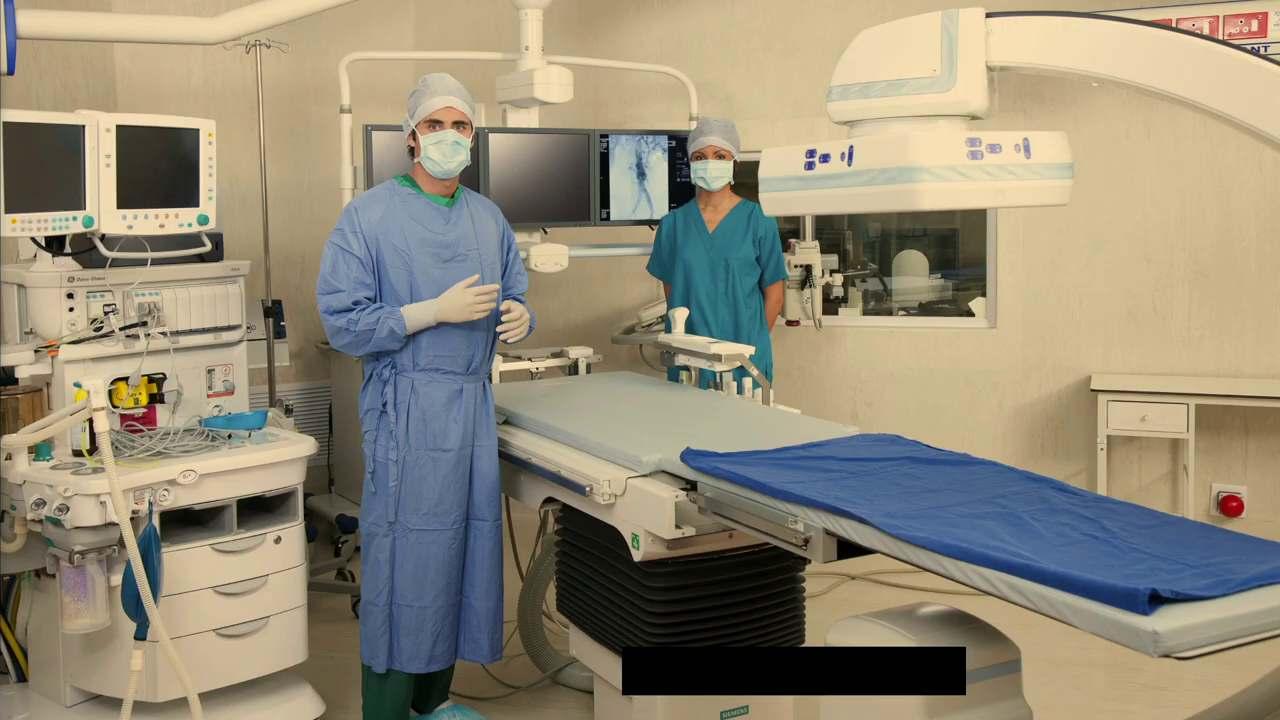
Lesson8:ActingImpulsively
But things got worse. They sent me for counseling at RCSI and the Professor of Virology who's now dead told me, 'let's be honest about this, you're possibly going to die. You know, there's been now over four or �ve IV/IM needle sticks and everyone have died'.So, I was on my own. Time to strategise, you have to stand back and consider a few things. The �rst thing is time is going to pass and it's up to you what you want to do with it. The second thing is whether you're positive or negative, the word will quickly go around and as a consequence, all your friends will think you're positive.
However, despite my terrible experience, counseling can o�er numerous bene�ts to individuals seeking support and guidance. Counselors can teach coping mechanisms and problem-solving skills, helping individuals navigate challenging situations more e�ectively. It can also facilitate self-re�ection and self-awareness, allowing one to gain insights into your thoughts, feelings, and behaviors, and help to make decisions.

So, what I decided to do was go to Dunedin in New Zealand, which was twenty thousand miles away from home. It was the second-largest city in the South Island of New Zealand and served as the principal city of the Otago region.


Lesson9:'TheseDaysWillPass'
Zidovudine(AZT)
The city was surrounded by picturesque landscapes, including rugged coastlines, beautiful beaches, and rolling hills, and notable for its architectural beauty and historical signi�cance. I arrived there in the early part of 1988, and quickly saw that the city showcased a wealth of Victorian and Edwardian-era buildings, including Dunedin Railway Station and the Larnach Castle. My �rst job was at Otago Public Hospital for a twelve month period, during which I would be able to have three HIV tests done. If all of these were negative, then hopefully my chances of developing the illness would be minimal.
In this period there was still no HIV/AIDS treatment but I began reading about a signi�cant milestone emerging called zidovudine (AZT). It was to become the �rst antiretroviral drug approved by the U.S. Food and Drug Administration (FDA) for the treatment of HIV infection. Zidovudine was initially developed as an antiviral drug to combat other viral infections but was later found to have activity against HIV. In the laboratory, it was discovered that zidovudine suppressed the replication of HIV.
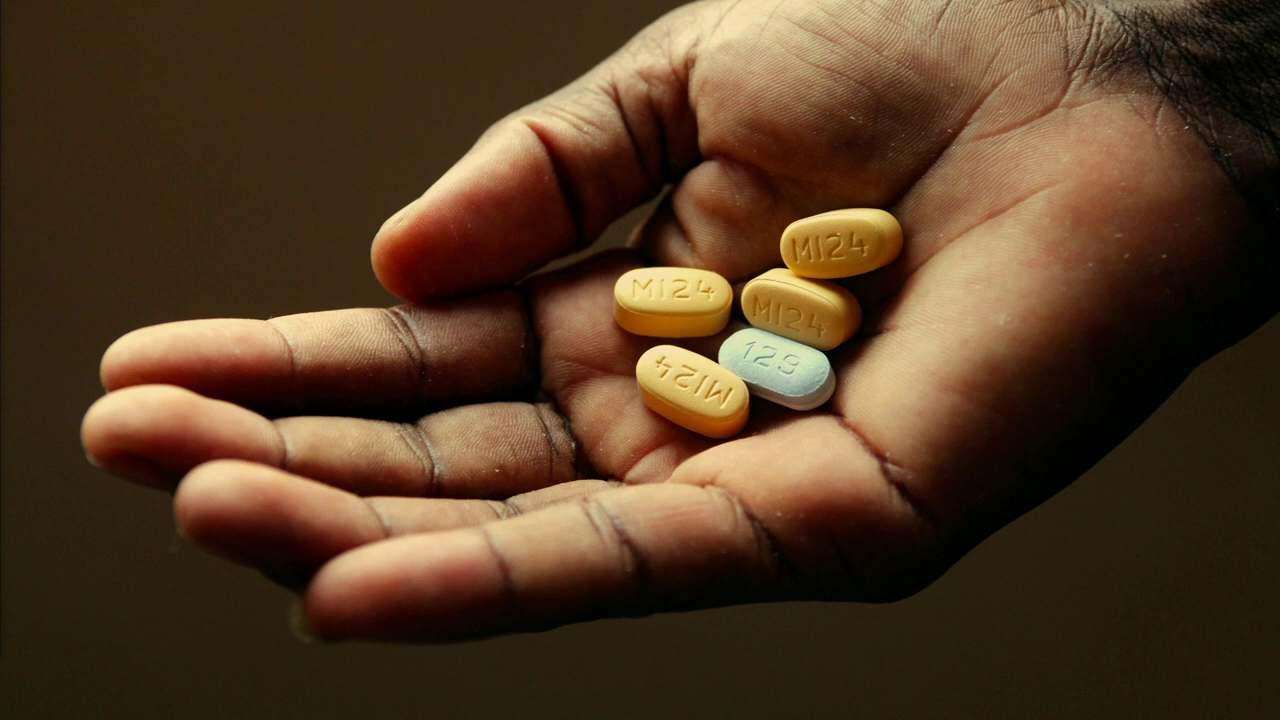
HIVTesting
Clinical trials were conducted to evaluate its e�ectiveness, and in 1987, it became the �rst drug to be approved for the treatment of HIV/AIDS. It belonged to a class of antiretroviral drugs known as nucleoside reverse transcriptase inhibitors (NRTIs). These drugs work by inhibiting the reverse transcriptase enzyme, which is necessary for the replication of the virus. By blocking this enzyme, zidovudine helped to slow down the progression of HIV and reduce the viral load in the body. My �rst test was negative leaving Ireland.
As the time approached for my second HIV test, I became very anxious. The test was done anonymously through the usual channels in the hospital. It would change my life if it came back positive, but I would just have to deal with it. The �rst step is to acknowledge and accept the existence of the problem. Avoiding or denying the issue may only prolong its impact. Meanwhile, I didn’t want my colleagues to know there might be a problem or to look at me di�erently. As the months passed I didn't give up, and I, after three negative tests, I knew the chances of me getting HIV were minimal.

While in Dunedin, I looked up one of my father’s best friends, Bartley O’Reilly, who had travelled from Garrison and settled in Dunedin many years before. I vaguely remembered him as one of the men who had gathered around the �re in the bicycle shop, but he had left while I was still young. Bartley’s emigration to New Zealand had come as a shock to my father, and I knew he had missed him terribly.
Over the next few months, I would spend quite a bit of time with Bartley and his wife, Vicky, whenever I could, visiting their home and listening to stories about the scrapes he and my father had got into as kids. Over the coming months, I decided not to return to Ireland just yet. In this period, I remembered many things including my earlier childhood dreams of wanting to relive Thesiger's experiences and adventures while living among the Marsh Arabs of southern Iraq for seven years. His narrative not only captured the beauty of the landscape, the harsh conditions of the environment, and the resilience of the Marsh Arabs, but instilled something about travel and adventure within me, and I decided that I wanted to visit there and ful�l part of my childhood dreams.

LivinginDunedin
In 1990, the possibility of working as a doctor in Iraq came my way and I decided to go there. The job was that of Sta� Health Doctor at the Ibn Al Bitar Hospital in Baghdad, which was run by the Irish organization PARC (Ireland) on behalf of the Government of Iraq. It was located in the Karkh district and provided a high standard of care during the 1980s and early 1990s.
Saddam Hussein was the President of Iraq and the leader of the Ba'ath Party during the 1980s. He rose to power in Iraq and became the country's �fth President in 1979. The Ba'ath Party advocated for Arab nationalism and socialism. His regime employed various tactics to maintain control and suppress dissent, leading to widespread human rights violations. The Iraqi society was marked by internal repression, with dissenting voices being silenced through intimidation, torture, and execution. The regime established a pervasive security apparatus, including the Mukhabarat (intelligence agency), to monitor and suppress opposition.
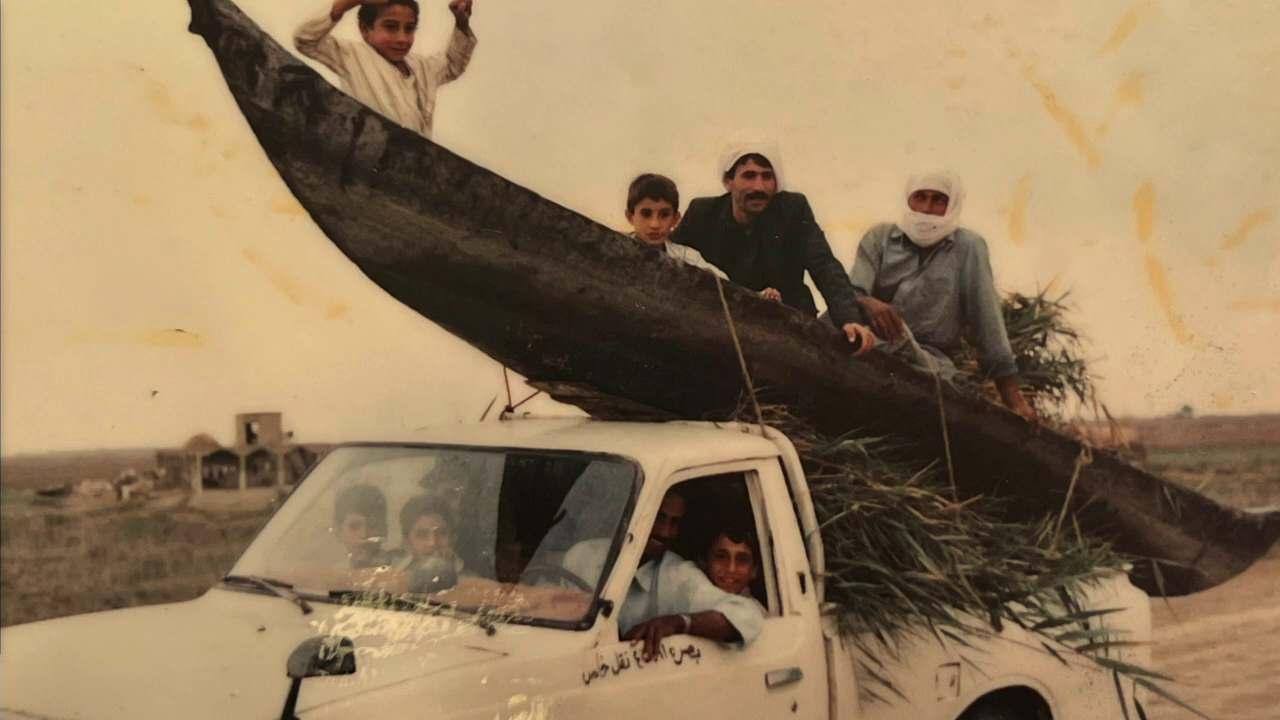
MovingtoIraq
During his rule, Saddam Hussein initiated the Iran-Iraq War in 1980, which lasted for eight years and resulted in immense casualties and economic devastation for both countries. Saddam's regime was notorious for human rights abuses, including widespread torture, executions, and disappearances of political opponents. The regime conducted a campaign against the Kurdish population, known as the Anfal genocide, in which thousands of Kurds were killed, and many villages were destroyed.
Farzad Bazoft and Daphne Parish were individuals who were involved in a signi�cant incident in Iraq just before I arrived in Baghdad. Bazoft was an Iranian journalist who settled in the United Kingdom in the mid-1970s. In 1989, he traveled to Iraq to cover the aftermath of the Iran-Iraq War. While in Iraq, he was arrested on spying charges. He was accused of attempting to gather intelligence related to Iraq's military capabilities. Daphne Parish, a British nurse, who was working at at the Ibn Al Bitar Hospital in Baghdad when she met Farzad Bazoft. The two became friends and were together at the time of their arrest. Daphne Parish faced accusations of being an accomplice to Bazoft's alleged spying activities.

TheBazoft-ParishIncident
LivinginBaghdad
Despite international e�orts to secure his release, Farzad Bazoft was convicted and executed on Saddam Hussein's orders in 1990. This incident received signi�cant media attention and drew international condemnation. Many believed that the charges against Bazoft were unjust, and his execution was widely criticized as a violation of human rights and freedom of the press.
Daphne Parish had worked as a nurse in Sta� Health and had been caught in the Nissan Patrol that was now given to me to use. That meant I carried details of the very vehicle used by both of them. Despite many international pleas for clemency, Bazoft was executed by the Iraqi authorities on the orders of Saddam Hussein. My colleagues said that the Iraqi authorities threw Farzad Bazoft's body o� at the British Council in a black bag. Daphne Parish, who would've been my nurse, got a life sentence. So Iraq was really out the fry pond I suppose, into the �re for me. If, I thought that my last Middle Eastern city was challenging, then Baghdad was Istanbul on steroids.
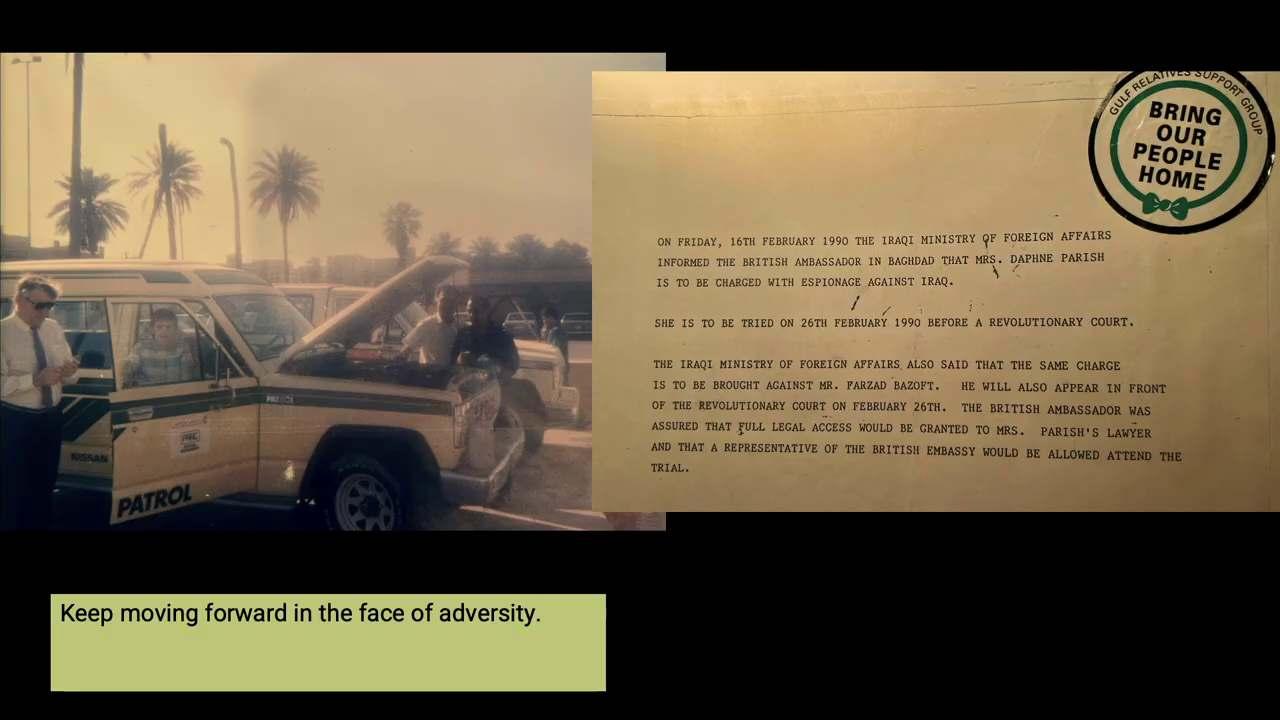
VisitingBabylon
During April, I went to visit Babylon whose historical signi�cance lay in its ancient history, including its association with the Babylonian Empire, Hammurabi's Code of Laws, and the famous Ishtar Gate. The ancient city, which had haunted European imaginations for centuries, was only about eighty miles south of Baghdad. In my Primary School, Master Regan had taught me how its hanging gardens were once considered one of the wonders of the ancient world, but I had never imagined that I would visit it one day.
The Bible stated that Babylon would be destroyed and never rebuilt, a Christian prophecy that Saddam Hussein had been unable to resist proving wrong. When he rose to power in Iraq, he said that Babylon would once more rise again from the dust. He conceived a grandiose scheme to reconstruct the ancient city, even building on top of the foundation stones of King Nebuchadnezzar’s Palace. Archaeologists worldwide were horri�ed and said that to rebuild on top of these ancient artefacts didn’t preserve history – it dis�gured it.
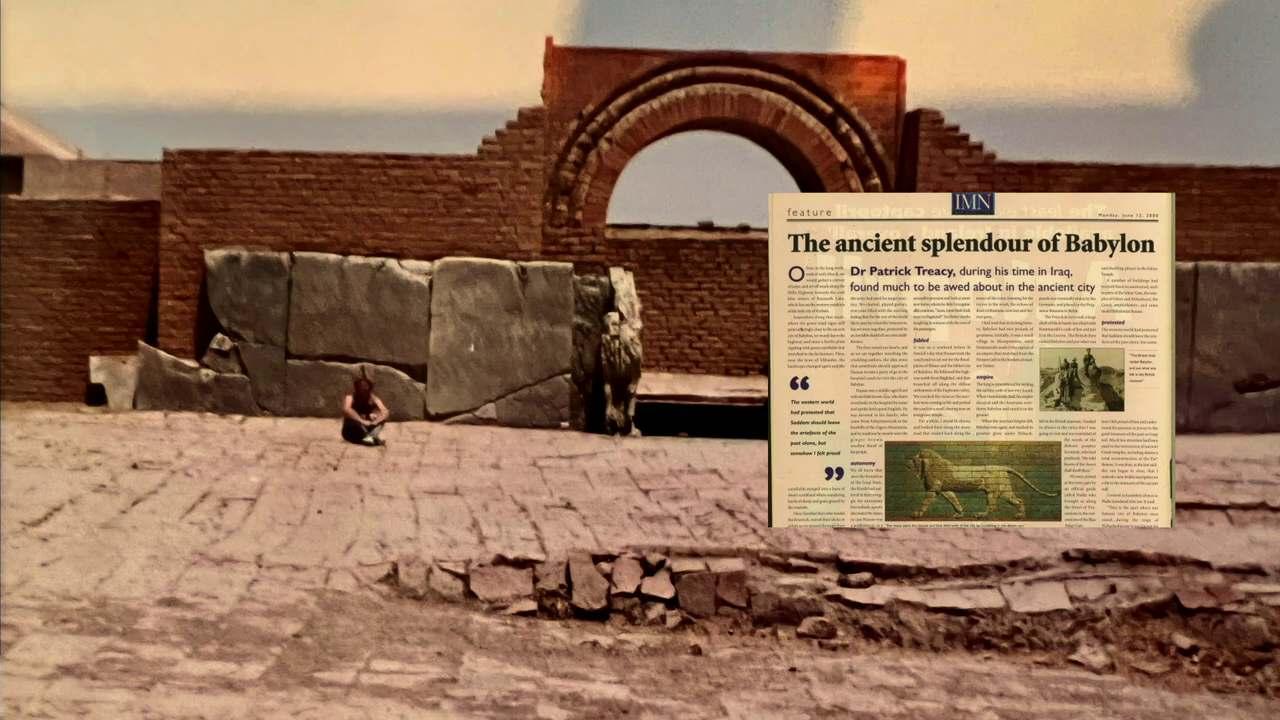
TheIraqiPatientsinICU
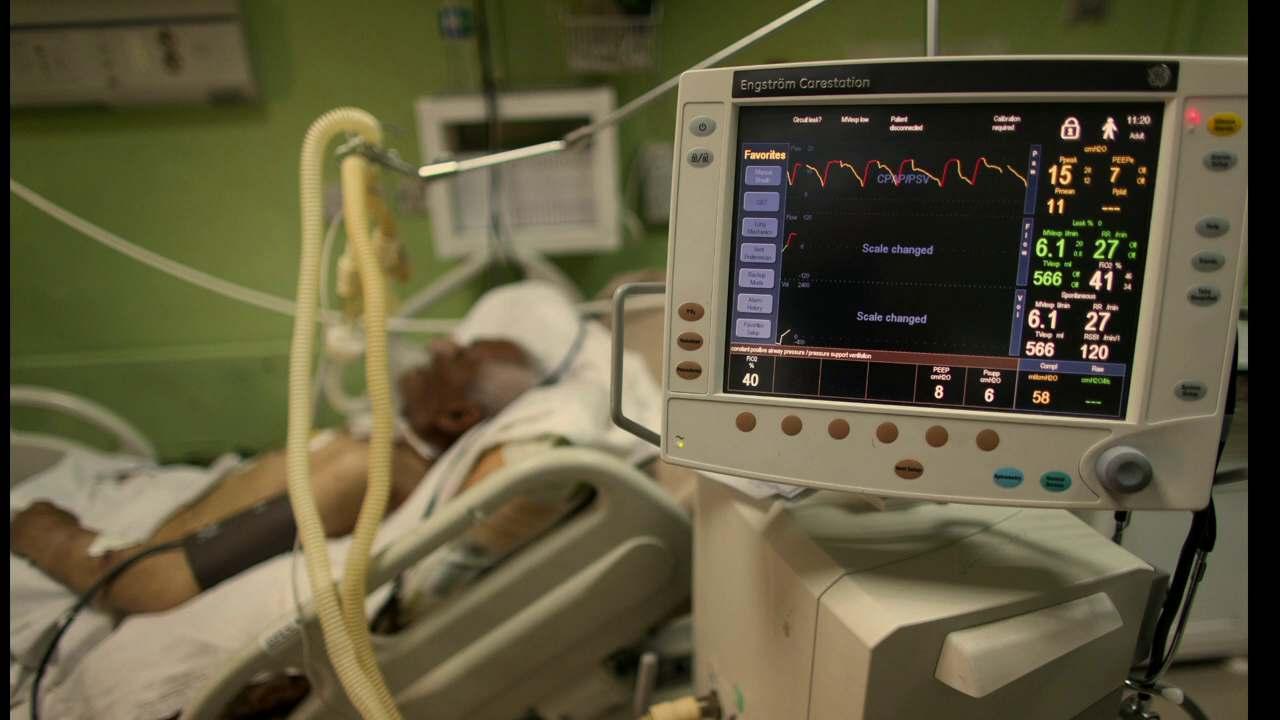
On my second weekend in Iraq, I visited the ancient city and sat for a while alone, reading the inscription that Saddam had embossed into the brickwork: ‘In the era of Saddam Hussein, protector of Iraq, who rebuilt civilisation and rebuilt Babylon.’ Babylon had long been associated with the anti-Christ and was said to have been the seat of power for the tyrant of the world. Maybe, I thought, this was history repeating itself.
By May 1990, it did not go unnoticed to me that many of the patients on the oncology ward at Ibn al-Bitar Hospital were su�ering from aplastic anaemia, a rare form of bone-marrow cancer, which left them unable to make mature blood cells. It also did not go unnoticed that the majority of patients su�ering from this condition came from the north-eastern area of Kurdistan, where Ali Hassan al-Majid – acting under direct orders from Saddam Hussein – decided to use Tabun nerve agent and mustard gas against the Kurdish population during the Halabja attack about two years earlier.
A video team from the Iranian army had captured the grotesque horror of this bombing attack. Five thousand people, mostly women, and children, had been killed in the �rst two days, and nearly ten thousand others su�ered from injuries that took their lives later. These wretched patients presented in Kurdish hospitals around Sulaymaniyah and future problems associated with cyanide poisoning caused by Tabun went mostly undocumented. In hindsight, it was probably during an arduous night, taking blood cultures on the oncology ward that I made up my mind to visit the area where the nitrogen mustard gassing had occurred. I had always had a sense of adventure and a desire to experience historical events at �rst hand. But I was also aware that travel to that part of Iraq was forbidden.
In the end, I decided to go up into that area, well aware that it was forbidden. I would have to dress as a Kurd and probably seek help from the Peshmerga, the military forces of the Kurdistan Regional Government. Their name was translated from "those who face death". While considering pursuing this adventure, I knew it was crucial to assess the risks involved and take necessary precautions to minimise any potential dangers.
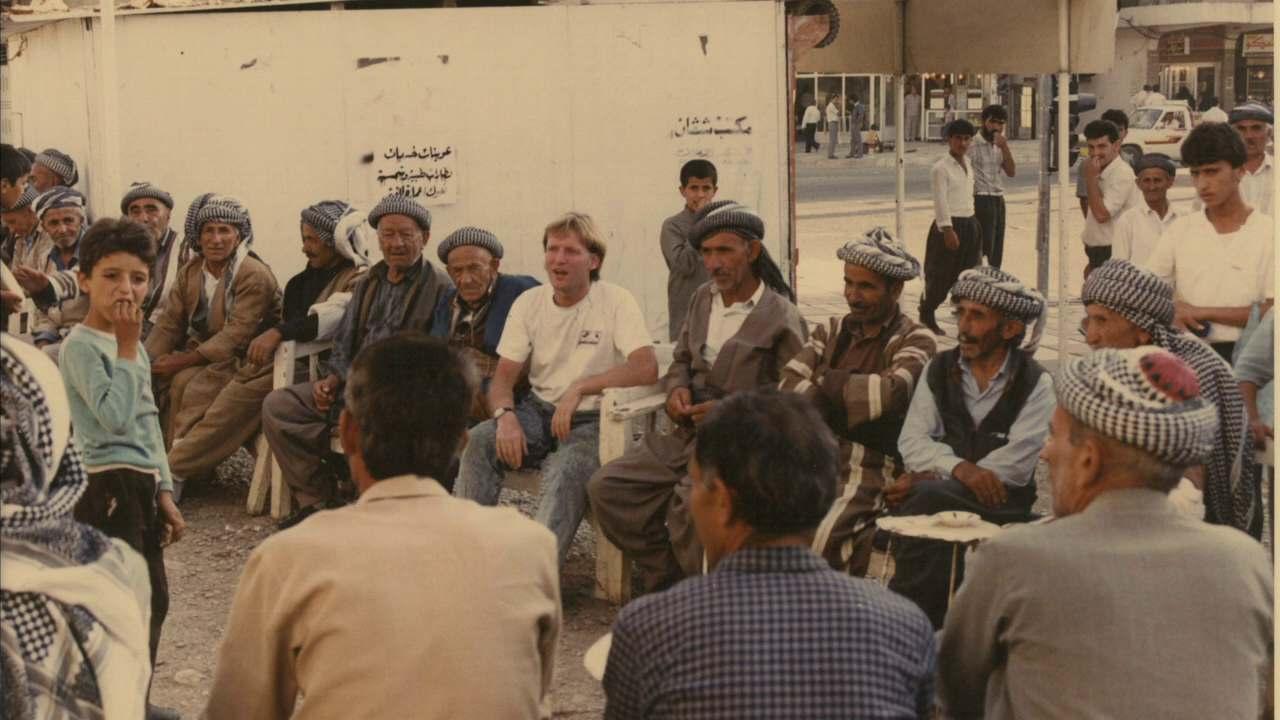
SaddamGasestheKurds
In many ways, choosing adventure over routine involves challenging oneself to explore new places and try new things. While this mindset can lead to exhilarating moments and personal development, it also comes with inherent risks and challenges that must be carefully considered. In late June, I started to put my plans in place. With a camera and four rolls of �lm in my orange backpack, I went to the taxi rank outside the Alawi al-Hilla bus station, looking for an English-speaking driver to take me to Mosul, in the heart of Kurdistan. I wandered amongst the drivers at the station, chatting and trying to glean as much information as possible; the secret police came in many guises, so I had to be careful about my choice. As we progressed north, I played my cassette tapes, a mixture of U2, Bob Marley and John Lennon. They brought a sense of comfort as our journey brought us through the fertile plains of Samarra, where we passed �elds of golden wheat and farmers harvesting their crops.
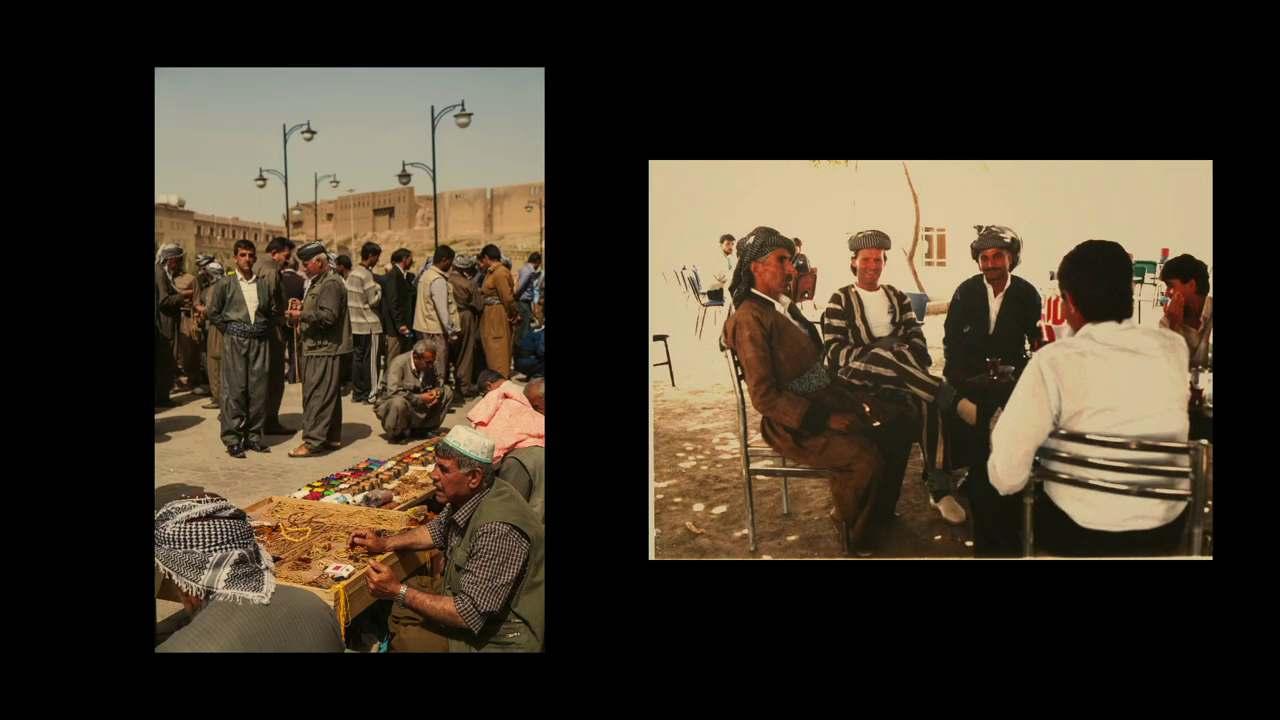
VisitingForbiddenKurdistan
As I stood amidst the solemn ruins of Halabja, my heart weighed heavy with sorrow and grief for the thousands of innocent lives lost in one of the darkest chapters of history - the Halabja massacre. The air was thick with the memories of the tragic event that unfolded here years ago, leaving scars that time could not erase. I had come to Kurdistan with the hope of bearing witness to the site where the devastating chemical attack had taken place. As I wandered through the remnants of the town, the haunting images of that fateful day echoed in my mind. The streets, once bustling with life, were now a somber reminder of the horrors that had unfolded here. While driving back from Kurdistan, the tranquility of the mountains was shattered when we were stopped at a roadblock. A group of Iraqi soldiers surrounded our car, their stern expressions re�ecting the seriousness of the situation that I was in. Fear gripped my heart as I realised that my presence in this forbidden place had not gone unnoticed. Before I could react, the soldiers surrounded me, demanding answers about my intentions and why I had come to Kurdistan. I knew that speaking truthfully about my purpose could lead to grave consequences, given the sensitivity of the Halabja massacre.
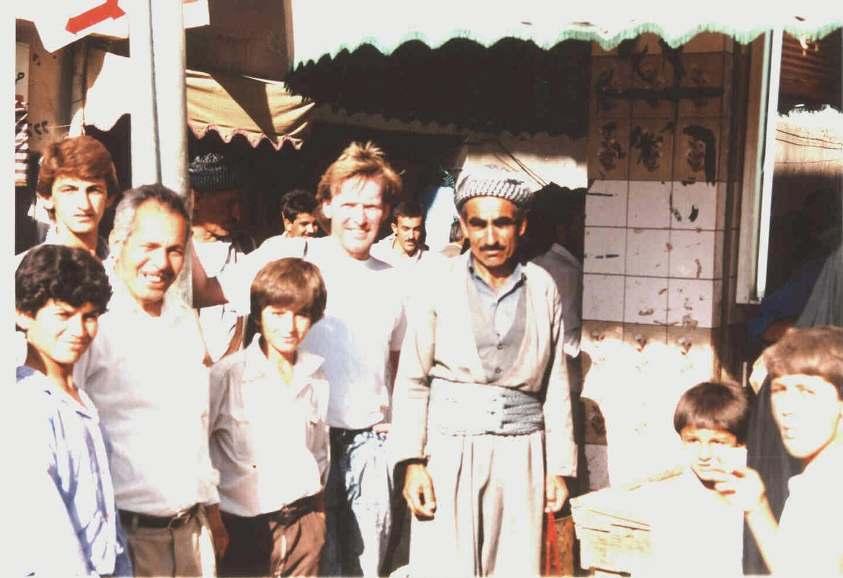
Halabja-EpicentreoftheChemicalAttack!
ArrestedbytheIraqiArmy!
Nevertheless, I mustered the courage to explain that I had come as a tourist because I loved travelling through rural northern Iraq. I was brought down a short corridor to a little cell, about six feet square, which contained a small bed with a �lthy mattress. The steel door was locked, and I was left alone. I sat on the bed and tried to gather my thoughts. The soldiers had taken my passport, camera, and �lm, but left my watch. I was concerned that it had only been a short time since Daphne Parish had been sentenced, and soon they would realise that I was working at the same hospital. They also had my rucksack and would certainly have my pictures developed.
No matter how I tried to organise the thoughts in my head, I kept coming to the same conclusion – I was in trouble. I could hear noises as if people were walking outside in the corridor, but no one entered my cell. The time passed slowly, and I knew it must be getting dark outside, but still, nobody came to interrogate me. I must have fallen asleep because the next thing I remembered was an older man, dressed in a long white dishdasha, standing over my bed. He carried a tray with some jam and �atbread and encouraged me to eat. ‘Do you speak English?’ I inquired. He put his hands to his lips and shook his head, indicating that he could not.
When he left, the door was locked under the scrutiny of the soldiers on duty outside. I sat down on the mattress and started to eat. Once I had �nished, I lay on the bed for a long time, trying to get back to sleep. Night fell and, with it, a darkness entered my spirit. I had read of horri�c acts performed in Iraqi prisons, and I prowled the room in silence, wondering what to do next, realising there was absolutely nothing I could do. I knew I had to be strong and face the consequences of my actions. Knowing what time, it had brought me some small comfort, and I was thankful they had let me keep my watch. During the night, there was a lot of shouting in Arabic, and the agonising screams of a prisoner being beaten. My heart hammered in my chest and I hoped it wasn’t Mohammed. At one stage, I thought I heard my name being called and feared for the worst. What devastation had I brought on this man by my decision to travel to Halabja?
PrisonerofSaddam
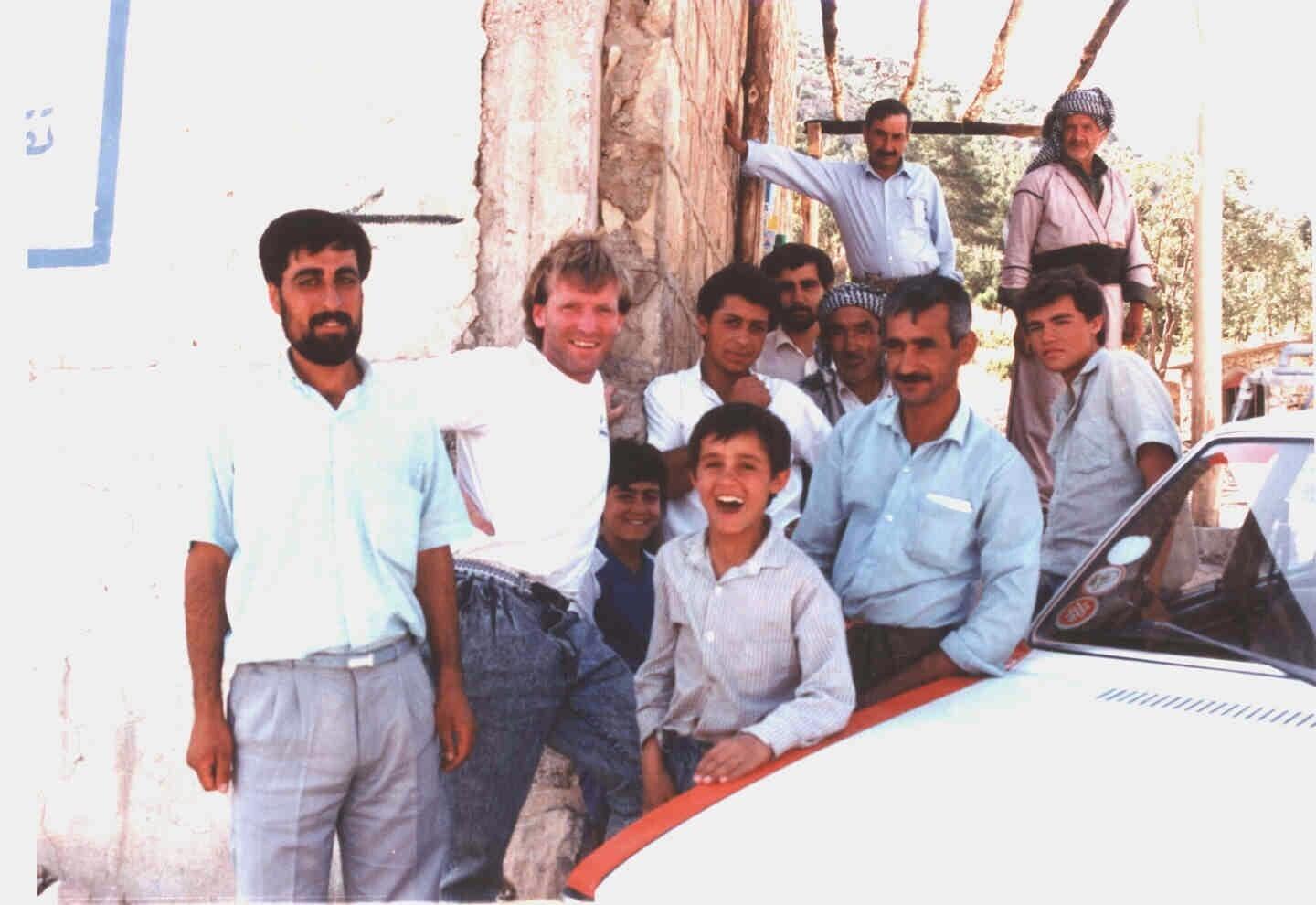
Over the next three hours, the steel doors along the corridor banged open and closed, as other prisoners were arrested and interrogated. Morning came, and the sun shone through a slit in the passageway under my door. At about ten o’clock, the door of my cell opened, and two men entered. They escorted me down the corridor to a room where a group of soldiers sat smoking around a small table.
My passport lay open beside them, and my camera was propped up with the lens facing the ceiling. One soldier spoke to me in perfect English. ‘What are you doing in this area? What kind of pictures have you taken?’ he asked. The soldiers eyed me with suspicion, their weapons still at the ready. I could feel the weight of their authority pressing upon me as they deliberated my fate. In that moment, I understood the grave potential danger I had put myself and my driver in. In reality, I was now more than seven hundred miles away from the safety of the hospital and none of my friends knew that I was even here.
In my knapsack, I was carrying the license number of Nissan Patrol vehicle that was already well known to the authorities. Each day, I went through interrogation, and each night I went to sleep with the screams of my fellow prisoners being tortured. The fear of being in an Iraqi jail during Saddam Hussein's reign created an atmosphere of silence and repression amongst the population.
During the time of Saddam Hussein's regime in Iraq, there was a pervasive fear of being incarcerated in Iraqi jails. The prisons, including the infamous Abu Ghraib prison, were notorious for their brutality and inhumane treatment of detainees. Thousands of individuals were subjected to torture, mass killings, and other forms of abuse within these prisons. People lived in constant apprehension, afraid to speak out or express dissent for fear of retribution. The widespread human rights abuses and the climate of fear and intimidation marked one of the darkest chapters in Iraq's history. Living under Saddam's rule meant living in constant fear of being arrested and detained without due process. The regime employed a widespread network of secret police and informants, leading to a climate of suspicion and distrust among the population. People were often arrested for perceived opposition to the government, regardless of whether the accusations were true. Inside the Iraqi jails, detainees faced unimaginable horrors. Torture was used as a means of extracting information or forcing confessions. Prisoners endured physical and psychological torment, leading to long-lasting trauma and scars. The conditions were deplorable, with overcrowded cells, unsanitary facilities, and a lack of basic human rights.
Still, I knew it was important ''never to give up'' despite the gravity of my situation. This idiom helped me embody the spirit of resilience and the refusal to surrender, no matter how di�cult the circumstances I was in. The conditions in the jail were deplorable, with cramped and unsanitary cells, and many prisoners were subjected to physical and psychological mistreatment. One morning, after a previous day of particularly intense interrogation, an older colonel came into my cell, put a gun beside me on the bed and roughed me up a bit but on re�ection, certainly nothing too serious. Then he turned to me with sympathetic eyes and said, ''You probably think we're all barbarians?''

And I responded ''No!'' ''I love being in Iraq with all of its history''
''I went to college with many Iraqi medical students in Dublin''.
To my surprise, the older soldier seemed to recognise the sincerity in my words.
Perhaps he was a�ected by the haunting history that surrounded us. After what felt like an eternity, he �nally spoke, and he said, ''I know James Joyce, I know Trinity College''. And then he lifted me by the arm and he frog marched me up through the cells and believe it or not, he threw me outside one of the doors. I couldn't believe it.
Lesson10:'NeverGiveUp'
I was actually free, and took the �rst �ight out of Iraq to Copenhagen. After spending �ve days in a jail under Saddam Hussein's regime, the experience of �nally being free was an overwhelming mix of emotions. Those days spent in con�nement were �lled with fear, uncertainty, and a constant sense of danger. However, the thought that my taxi driver was not released haunted me for many months. As I left the country, my heart remained heavy with the weight of the past. I vowed to never forget the atrocities that occurred here and to continue advocating for peace and humanity, even in the face of adversity. I knew that my brief encounter with the Iraqi army was a reminder of the sacri�ces made by the Kurdish people and the ongoing struggle for justice and recognition. I vowed to never forget the atrocities that occurred here and to continue advocating for peace and humanity, even in the face of adversity. I later got front page news in the Fermanagh Herald while supporting these people after the Gulf War.
It was July 28th 1990, and three days later I was at the Galway Races when Saddam Hussein's army invaded Kuwait and all my four hundred and �fty colleagues at the Ibn al Bitar hospital in Baghdad were held there as hostages.
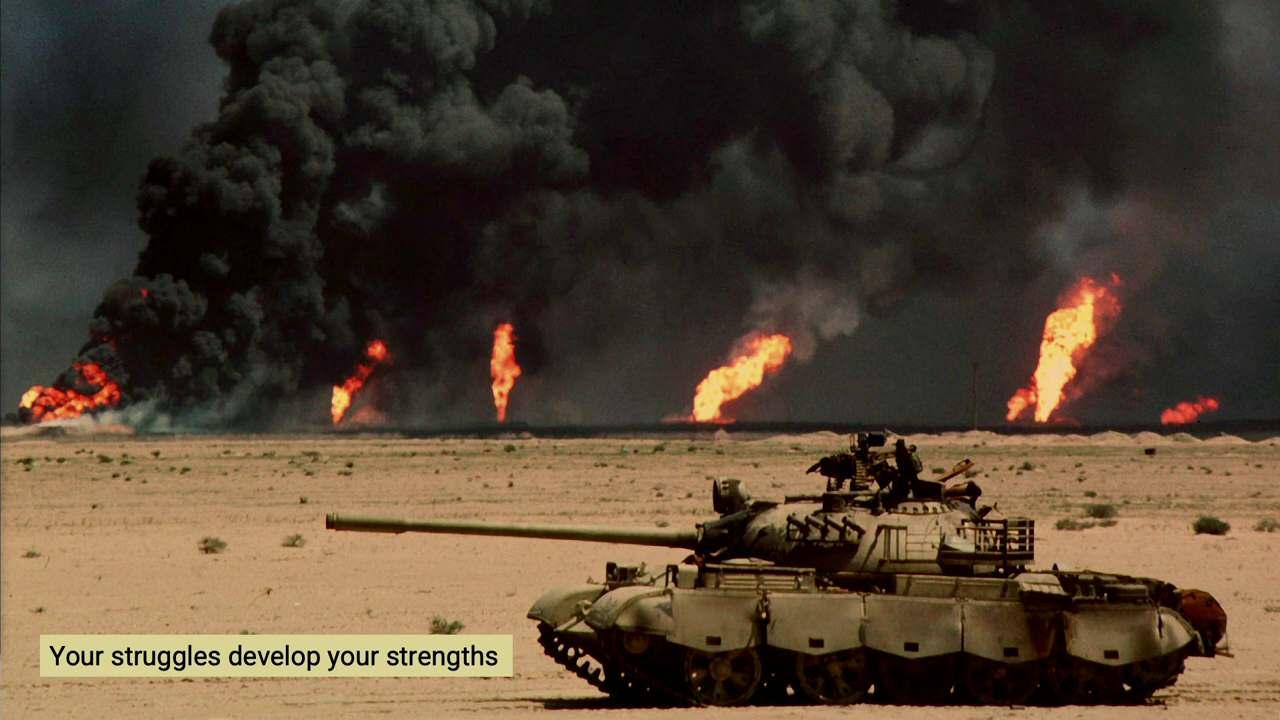
There were other hostages held in Iraq, and notable �gures like Muhammad Ali traveled to Iraq in 1990 before the Gulf War, where he met with Saddam Hussein in an endeavor to negotiate the release of American hostages. Ali's e�orts were aimed at using his in�uence and reputation as a global icon to appeal to Saddam Hussein for the hostages' freedom. My friends were all released the following February 1991
In many ways, I am often reminded of the quote, often attributed to Buddha. "In the confrontation between the stream and the rock, the stream always wins, not through strength but through perseverance," Although the quote is more probably attributable to H. Jackson Brown, Jr., it highlights the power of perseverance and resilience in overcoming obstacles. It uses the analogy of a stream �owing against a rock, symbolising the challenges we face in life. While the rock may seem strong and immovable, the stream's continuous and persistent �ow eventually erodes and overcomes the obstacle. Similarly, in life, it is not always brute strength or force that leads to success; rather, it is the determination to keep going and never giving up despite challenges that leads to triumph.
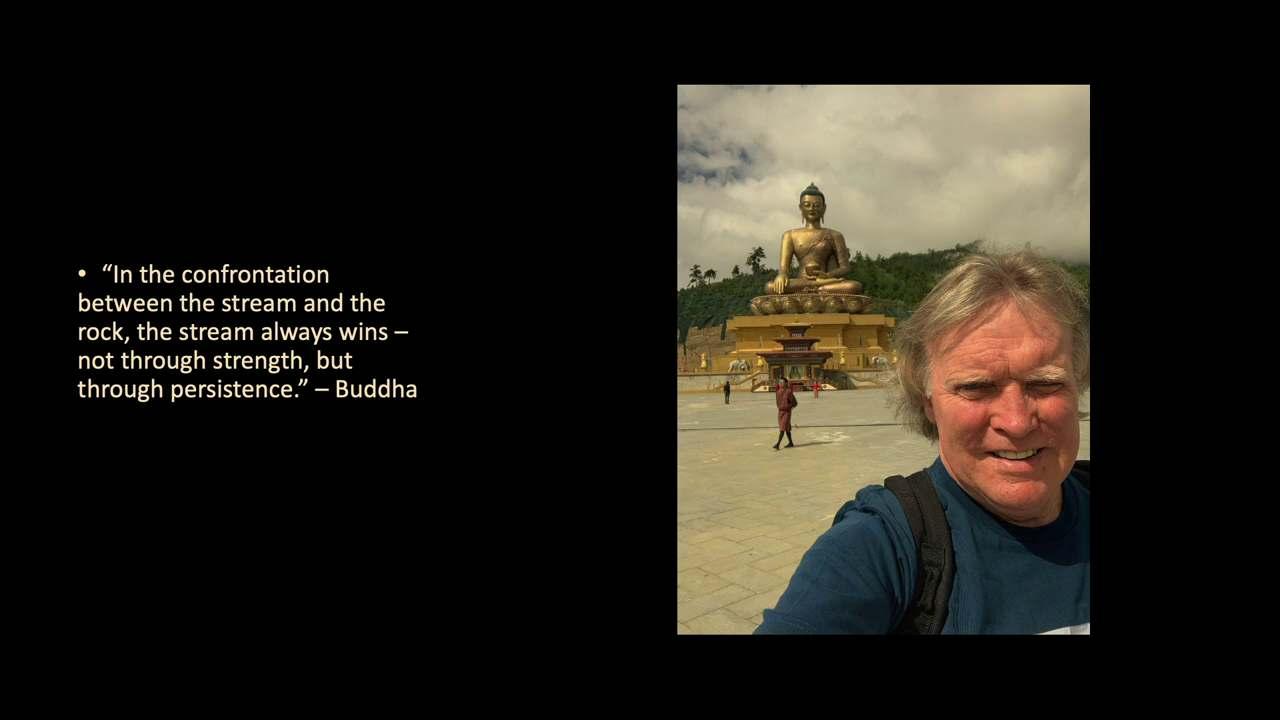
WorkingasaRoyalFlyingDoctor
In the summer of 1996, I ful�lled my dream of working with the Royal Flying Doctor Service in Broken Hill, a remote mining city in the far west outback of New South Wales. The town had received its name from an entry in the diary of explorer Charles Sturt, who mined silver ore there in 1883. The break in the hills that the explorer noted no longer existed, having long since been mined away.
The Royal Flying Doctor Service (RFDS) n Australia was started by Rev John Flynn, superintendent of the Australian Inland Mission about forty-�ve years later. The RFDS operates a �eet of aircraft that serve as "�ying hospitals," allowing medical teams to reach areas that are inaccessible by traditional means. They provide emergency medical care, conduct medical evacuations, and o�er primary health services to people in need. The organization's dedication to bringing healthcare to areas without access makes it possible for people to live, work, and travel across Australia with greater peace of mind. Ful�lling your childhood dreams is a deeply rewarding and transformative experience that can bring a sense of joy, purpose, and ful�llment to your life. It involves revisiting the dreams and aspirations you held as a child and taking deliberate steps to make them a reality in adulthood.
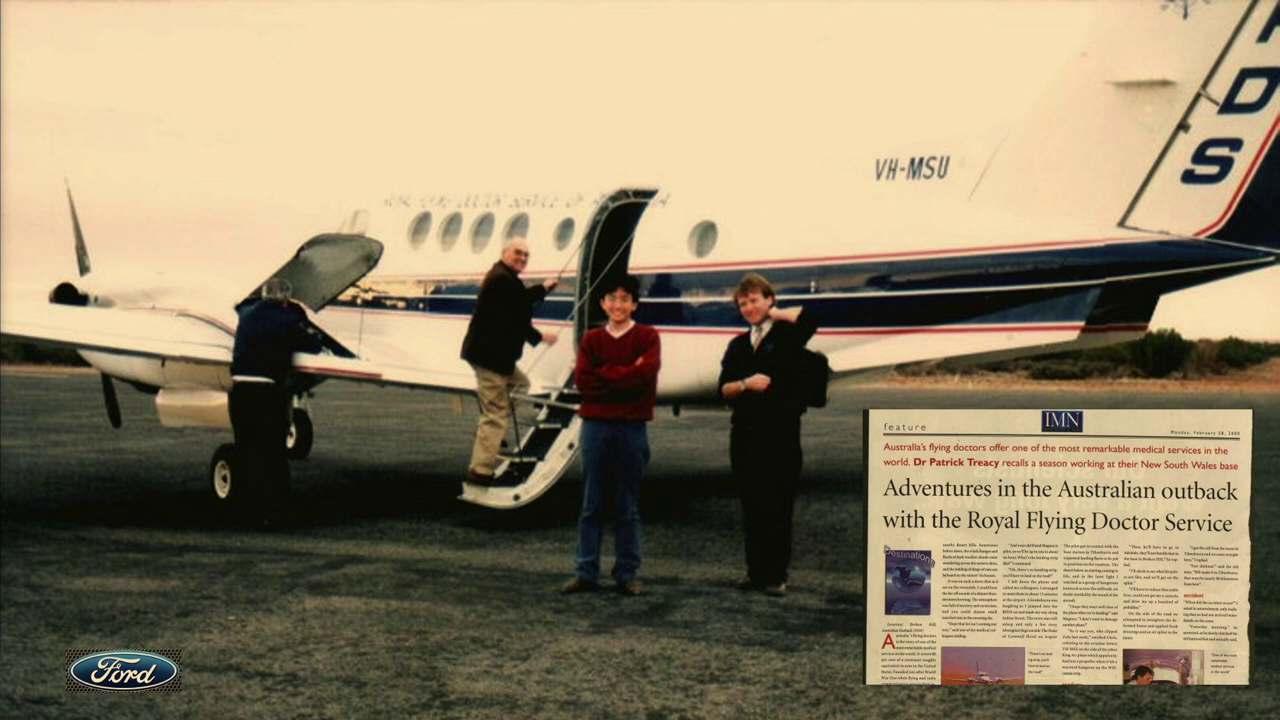
On return to Dublin in 1999, I set up the Ailesbury Clinic and started trialing Botox® for many uses including sweating, trigeminal neuralgia and chronic migraines. One of our nurses, Tadgh, told me his daily pain had almost completely disappeared after he got Botox®. That summer I gave a lecture on the use of Botox® in the treatment of migraine to the Migraine Association of Ireland.
As we approached the end of the twentieth century, many technical innovations emerged almost at the one time. These included Botox®, hyaluronic-acid dermal �llers and the invention of newer cosmetic lasers, such as IPL for facial rejuvenation and hair removal. The new century ushered in a new era of thinking in medicine, in which stem cells and cloning might revolutionise the treatment of chronic disease. Many, including myself felt that if we could harness the power of platelets, stem cells or �broblasts, we could possibly repair damaged skin, burns, acne scarring and even, potentially, eradicate wrinkles. By 2005, I got increasing requests to lecture at international conferences, and found it a great way to expand my knowledge in new cutting-edge techniques. I lectured in Moscow, New York, Paris, London and Monaco.
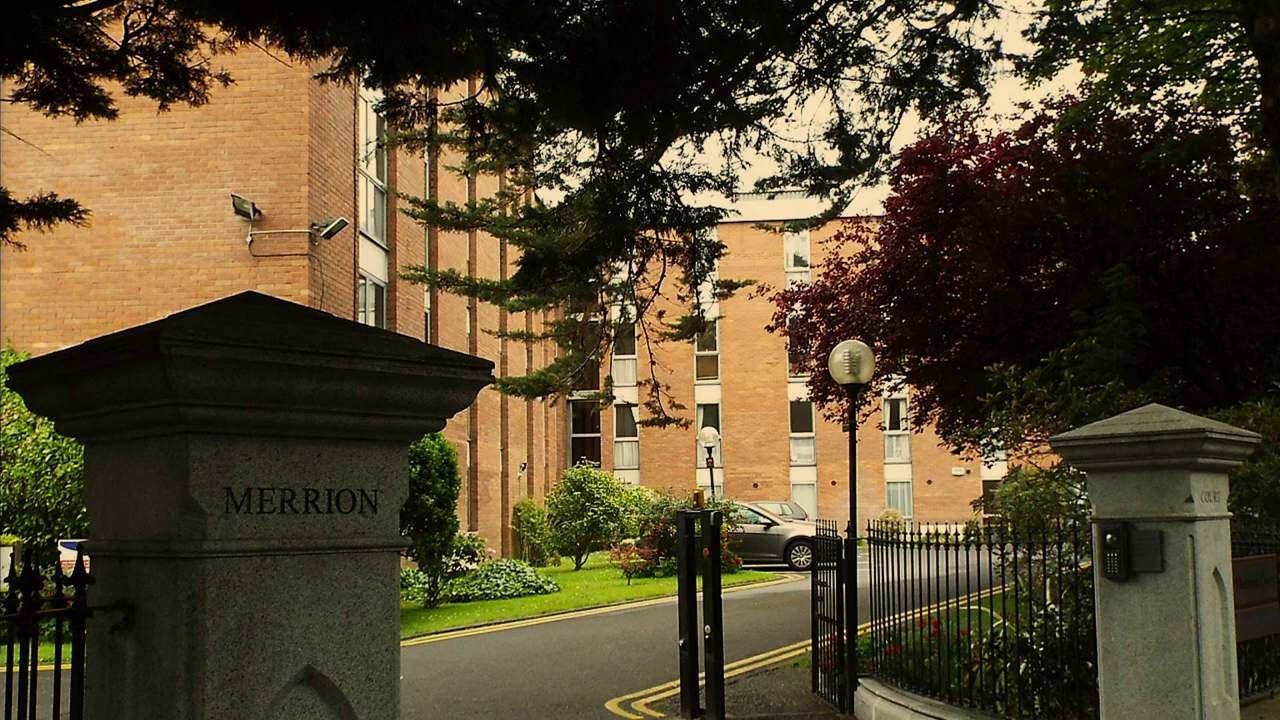
AilesburyClinic
In late June 2006, rumours circulated in the Irish media that Michael Jackson had been sighted near the village of Kinsale, in County Cork. Over the next few days, sightings of the singer gained some credence, especially when RTÉ interviewed a bookshop owner in Dun Laoghaire, who con�rmed a surprise visit from Michael and his children. When the singer failed to show up at a Bob Dylan concert in Kilkenny as rumoured, fans were disappointed, but the speculation about him remained. I wasn’t a massive fan of Michael’s music back then, much preferring bands such as U2, the Rolling Stones and Pink Floyd, but I certainly recognised his genius when he performed on stage. His creativity crossed not only musical genres but also ethnic lines and made us believe that we could make this world a better place. I was actually surprised when he later visited the clinic. It all happened so quickly that I was rather unprepared. ‘Hi, Doctor Treacy,’ he said. ‘I’m Michael Jackson.’ He was the last person I had expected to walk through the door. Startled for a moment, I wondered why he would even feel the need to introduce himself – there would be few people on the planet who wouldn’t recognise him.
Michael was slightly taller than I had expected, slim, but not too thin. He wore a black fedora; his curly hair was tied at the back, and he had a smile so infectious that it was impossible not to warm to him. His jacket was made of velvety black suede, and it covered a white V-necked jumper that stretched tightly over his light frame. He wore little leather bands on both wrists; the type one gets on the beach during holidays on Greek islands. We gathered by the glass doors near the clinic’s reception area. He turned back around to me. ‘You’ve already met Grace,’ he said, ‘and she tells me you’re interested in Africa. I know that you do some humanitarian work in Africa.’ ‘How do you know that?’ I asked, wondering if during his research, he had seen some of my YouTube videos, which I’d uploaded about Africa. I was completely taken aback when he then retrieved an old, curled-up Health & Living magazine from his inner jacket pocket and proceeded to read aloud from it. Slightly bewildered, we all listened intently, as he read from an article that I had written some years earlier.
'MeetingTheKingofPop'
HelpinginAfrica

‘ThereisunchangingmagicinthelandscapeofAfrica,butlater,wepassmanyempty villagesandvacanthutsthatareatestamenttothedestructivepoweroftheplague whosepathwefollow'.
’ He continued reading,
‘Iamhauntedbythesedesertedhamletsand,intherestless windsthatstirthebluesavannahgrasses,Ilistenexpectantlytohearthenoiseof playingchildrenorthesoundofbarkingdogs,butnosoundcomes.
’ He lowered the magazine. ‘You know,’ he said to me, ‘I cried when I read this article. It captures the devastation of HIV in Africa.’
'Hi, Doctor Treacy,’ he said. ‘I’m Michael Jackson.’ It all happened so quickly that I was unprepared. He was the last person I had expected to walk through the door. Startled for a moment, I wondered why he would even feel the need to introduce himself – there would be few people on the planet who wouldn’t recognise him.
Having survived to reach this stage of life, I decided to give back. So one of the �rst things I did was in 2000 to treat HIV patients when HIV patients were stigmatized the world over. And I had worked in South Africa and I had disagreed openly with the HIV/AIDS deniers become prevalent there
Thabo Mbeki, the former president of South Africa, was known for his stance on HIV/AIDS denialism, which followed the theories of Peter Duisberg. HIV/AIDS denialism was a controversial and dangerous position that denied the scienti�c evidence linking HIV to AIDS and questioned the e�ectiveness of antiretroviral treatment. Thabo Mbeki's denialist views became a major obstacle to addressing the HIV/AIDS epidemic in South Africa, as his refusal to accept medical evidence and embrace mainstream scienti�c consensus led to delays in implementing e�ective prevention and treatment programs. It is estimated that his denialist policies caused around 300,000 deaths due to the lack of access to life-saving antiretroviral drugs.
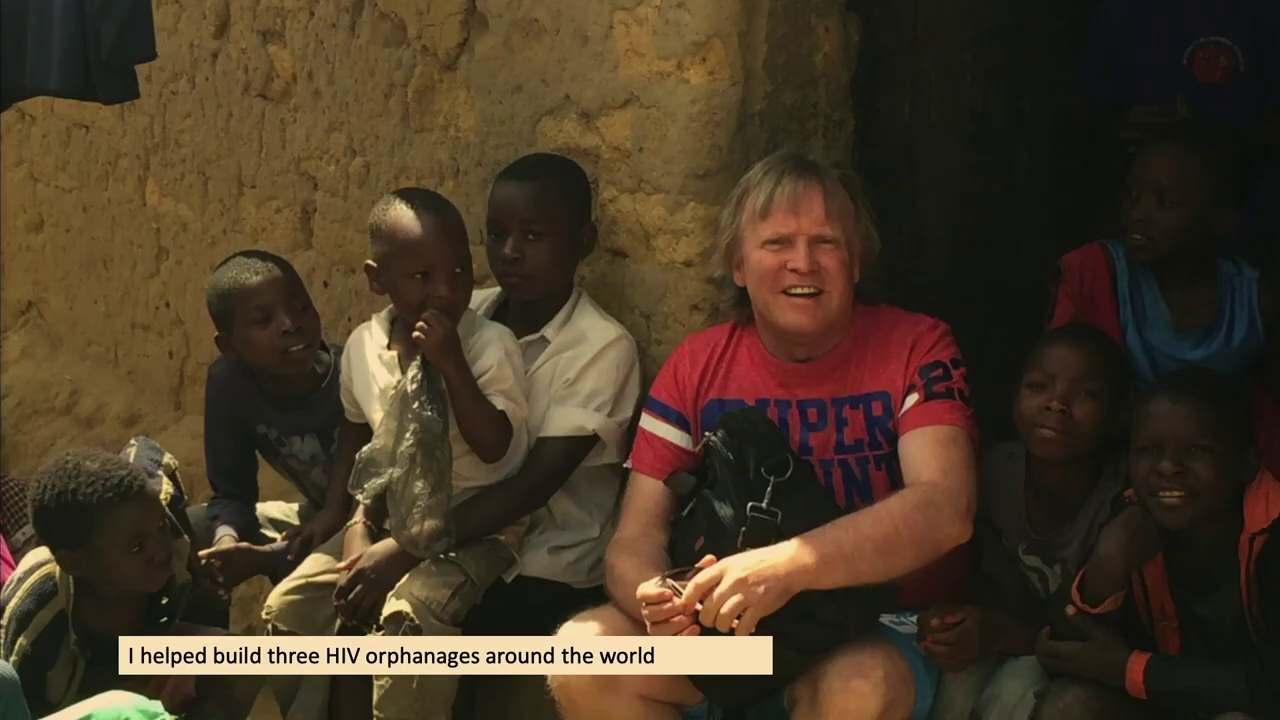
2001SouthAfrica
Peter Duisberg, a prominent HIV/AIDS denialist and professor of molecular biology, proposed the theory that AIDS was caused by long-term use of recreational drugs and not by the HIV virus. Mbeki cited Duisberg's views and embraced denialist ideas, leading to signi�cant controversy and criticism from the global medical community. Mbeki's endorsement of HIV/AIDS denialism had a detrimental impact on public health policy in South Africa during his presidency, as it hindered e�orts to combat the HIV/AIDS epidemic and provide adequate treatment and support to those a�ected. In 2003, I won top journalist in Ireland because of my articles on Africa.
Making a stand for what you know is correct means taking a �rm position in defense or opposition to something based on your beliefs or knowledge, and publicly asserting your opinion without relenting. It involves standing up for what you believe is right, even in the face of opposition or challenges. Taking a stand is an act of courage and conviction. It requires con�dence in your beliefs and the willingness to speak out and take action to uphold what you know to be correct, regardless of popular opinion or pressure from others. Making a stand can be an important way to advocate for justice, fairness, and truth.

Lesson11:'StandUpforWhatyouKnowisRight'
Over the coming years, I won many other awards including 'Top Aesthetic Doctor in the World' in 2019 at the Bellagio Las Vegas. It has been quite a journey but I got there in the end
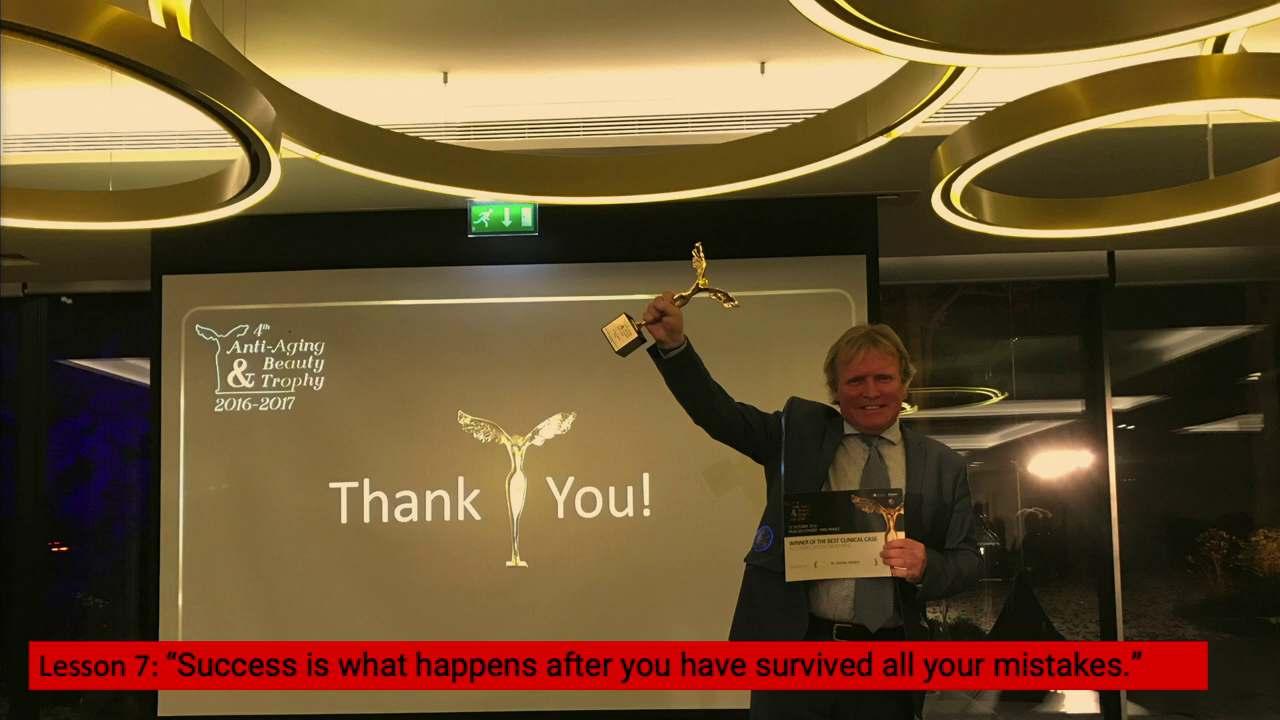

Resisting the temptation to scale down, implies the importance of staying true to one's values, principles, or goals, even when faced with challenges or distractions that might lead to compromising on them. It suggests maintaining one's integrity and commitment to higher standards, rather than succumbing to easier or more convenient paths that may not align with one's long-term objectives.
In various aspects of life, whether personal or professional, individuals may encounter temptations to take shortcuts, compromise on ethics, or settle for mediocrity. "Resisting the temptation to scale down" encourages individuals to stay focused, persevere, and maintain their standards and aspirations, even in the face of di�culties or alluring alternatives.
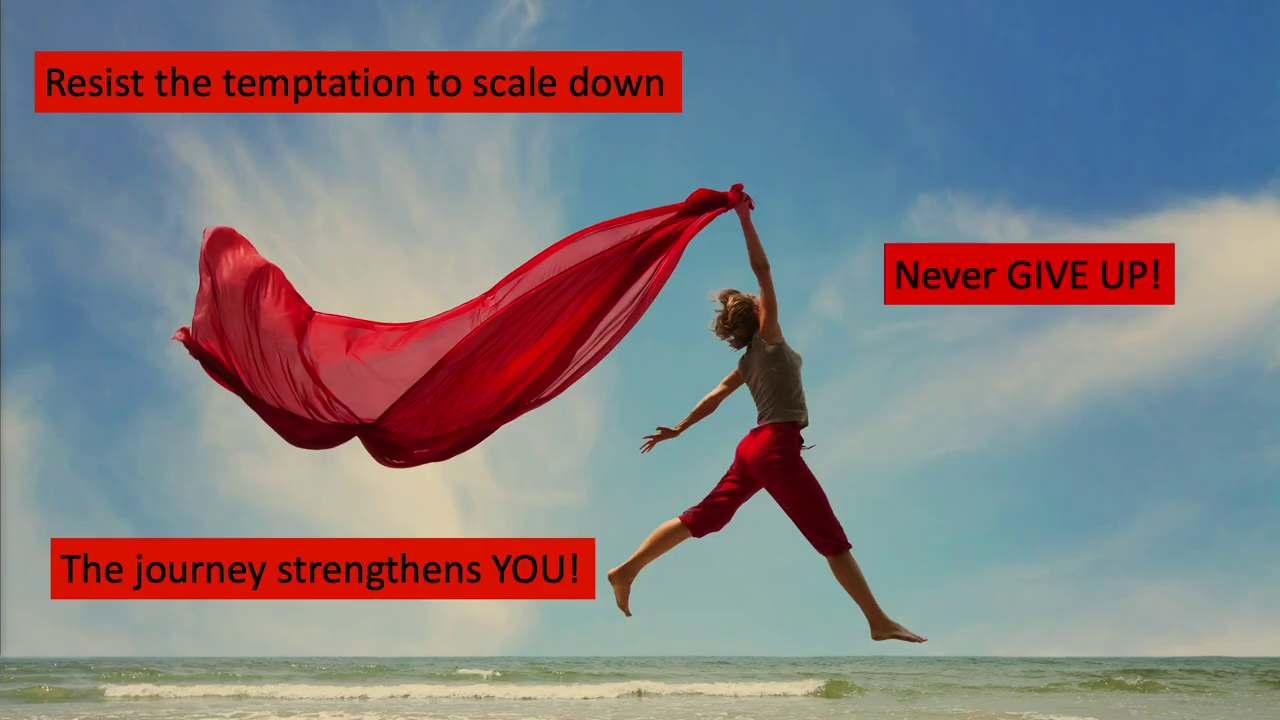
Lesson12:
the
'Resist
TemptatontoScaleDown'
Lastly, the phrase "success is what happens after many failures" highlights the idea that achieving success often involves going through a series of failures and setbacks.
We should see failure as a natural part of a journey toward success and can serve as a stepping stone to achieving one's goals. Instead of being discouraged by failures, we should be encouraged to learn from them, adapt, and persevere in our pursuit of success. This concept emphasises the importance of resilience, determination, and a growth mindset. It acknowledges that success rarely comes easily and that facing and overcoming failures can build character and skills that ultimately contribute to achieving success. Learning from failures can lead to valuable insights, new approaches, and increased motivation to keep pushing forward. It also fosters a sense of humility and the willingness to take calculated risks in the pursuit of one's aspirations.
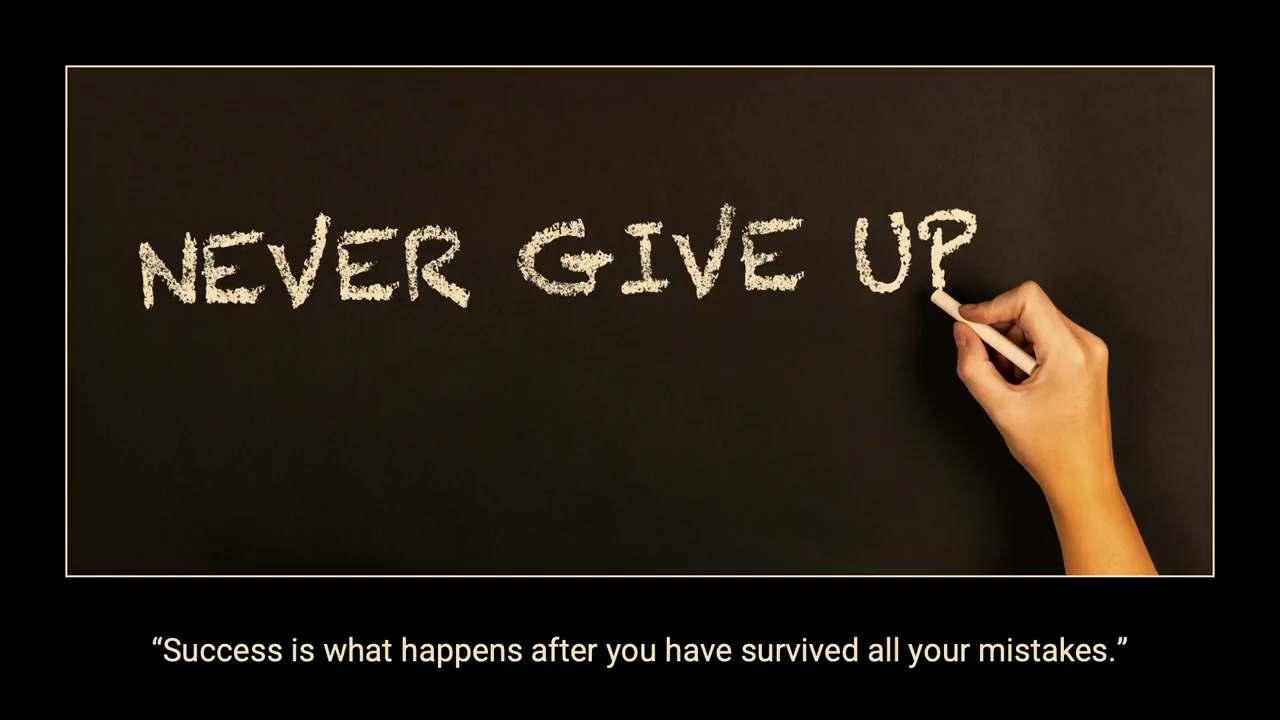
Lesson13:
"SuccessisWhatHappensaftermanyFailures"
Prof,Dr PatrickTreacy
Never Giving Up, Awaiting Success After Failure: Emphasizes the importance of perseverance and not giving up despite facing failures and setbacks. Have Some Childhood Heroes, Try to Relive Your Heroes' Adventures: Encourages seeking inspiration from childhood heroes and using their experiences as motivation for personal growth. Changing Direction to Maintain Your Dreams: Suggests being �exible in pursuing dreams and adapting when necessary to stay on the path towards success. Don't Perceive Obstacles as Roadblocks: Encourages a positive mindset and viewing challenges as opportunities for growth rather than obstacles. Don't Wait for OpportunityCreate It!: Advocates taking initiative and actively creating opportunities instead of waiting for them to appear. Balancing Risk and Opportunity: Stresses the importance of evaluating risks while seeking and seizing opportunities for growth. Planning Your Path: Highlights the signi�cance of setting goals and developing a clear plan to achieve them. 'These Days Will Pass', 'Never Give Up', 'Stand Up for What You Know is Right': Inspirational phrases that underscore resilience, determination, and standing up for one's beliefs. 'Resist the Temptation to Scale Down': Encourages resisting the urge to settle for less and maintaining high standards in pursuing goals. "Success is What Happens after Many Failures": Emphasizes the idea that success often follows a series of failures and the importance of learning from setbacks.
